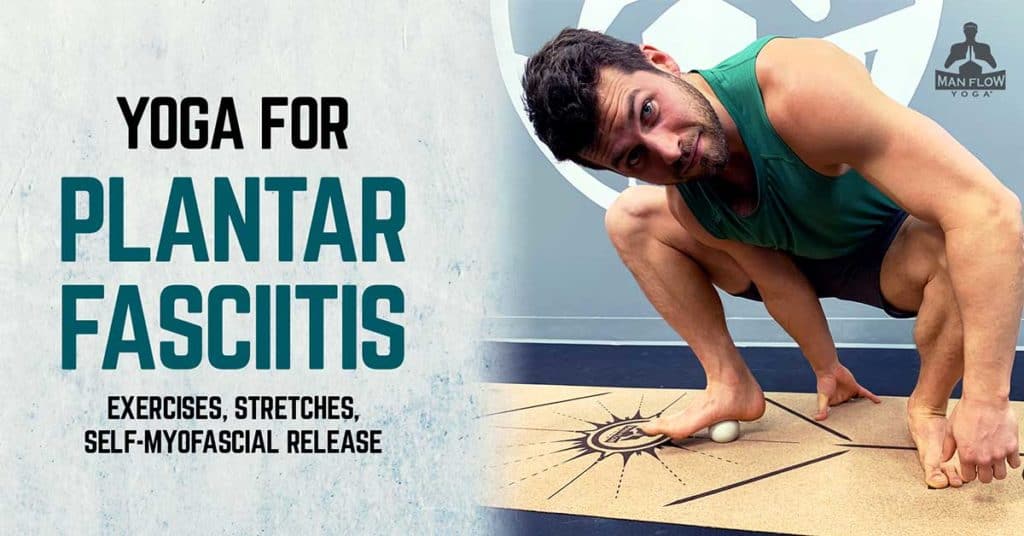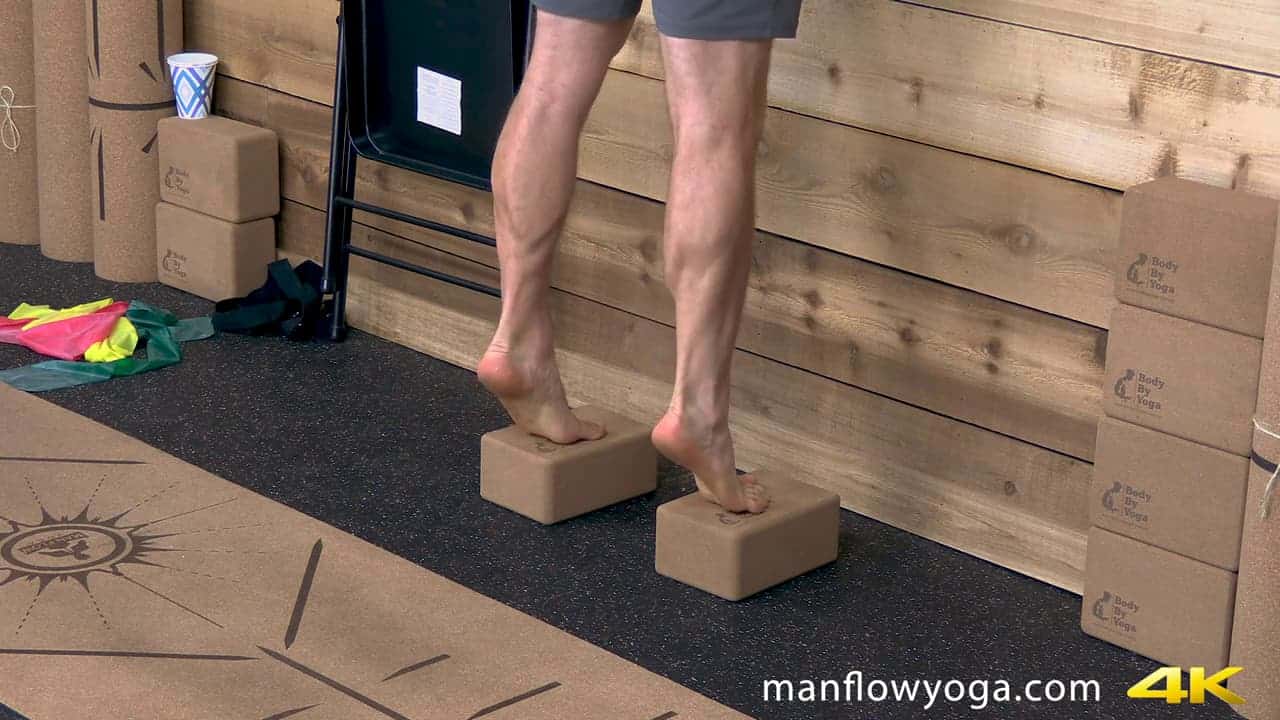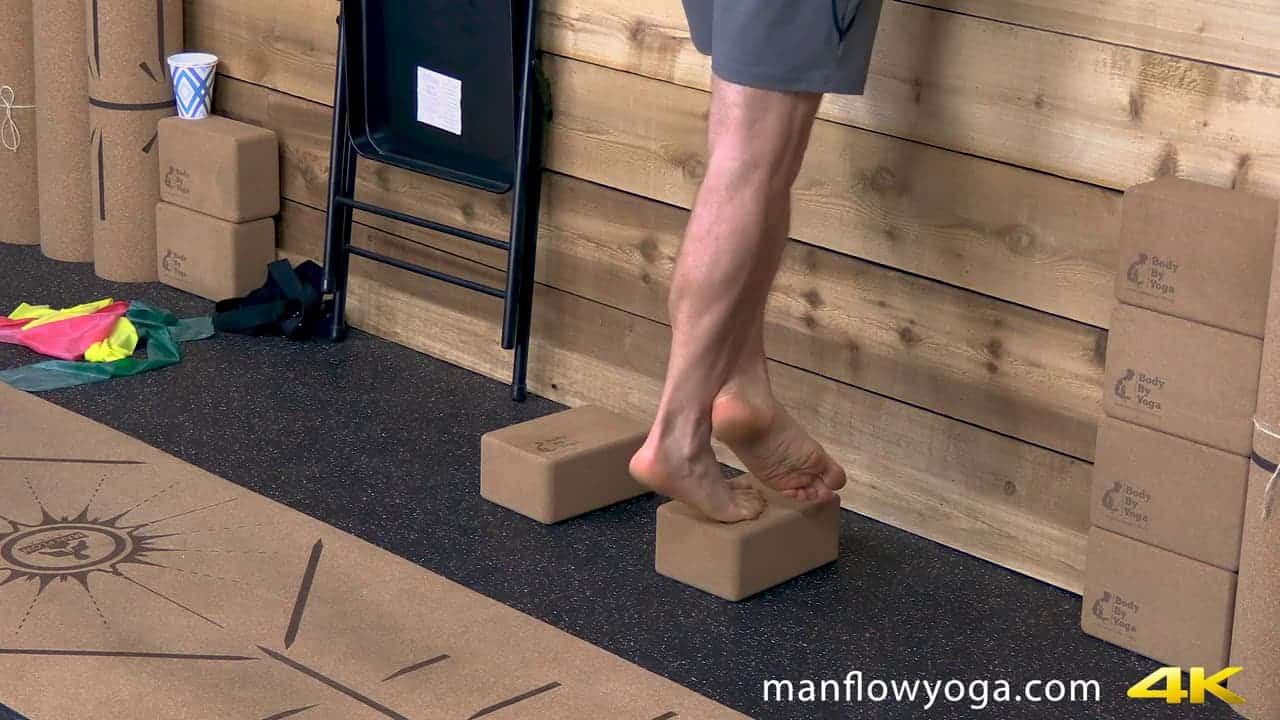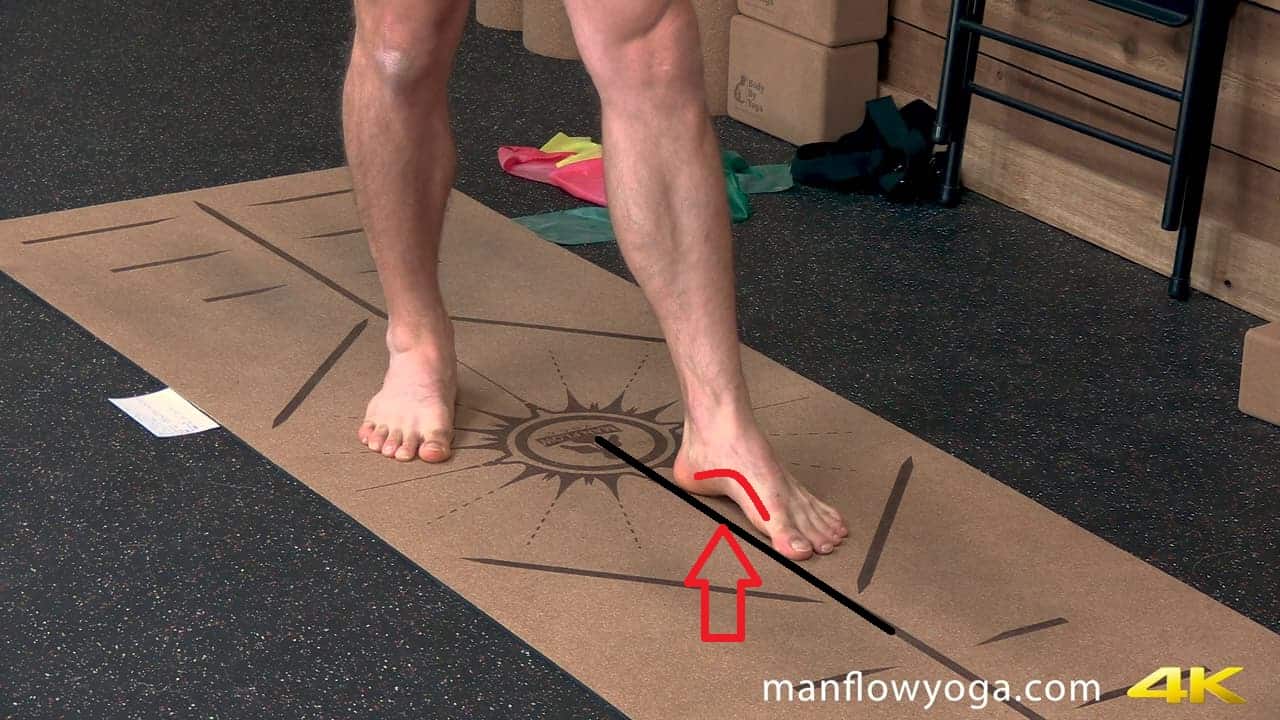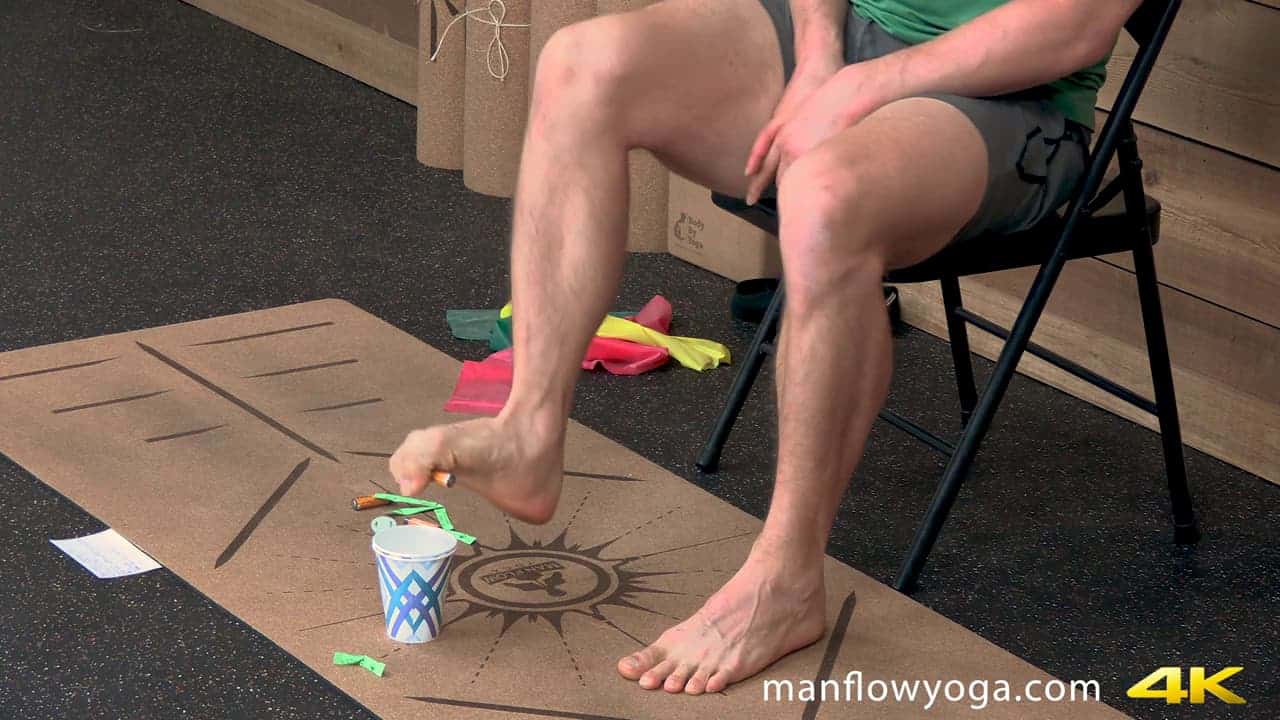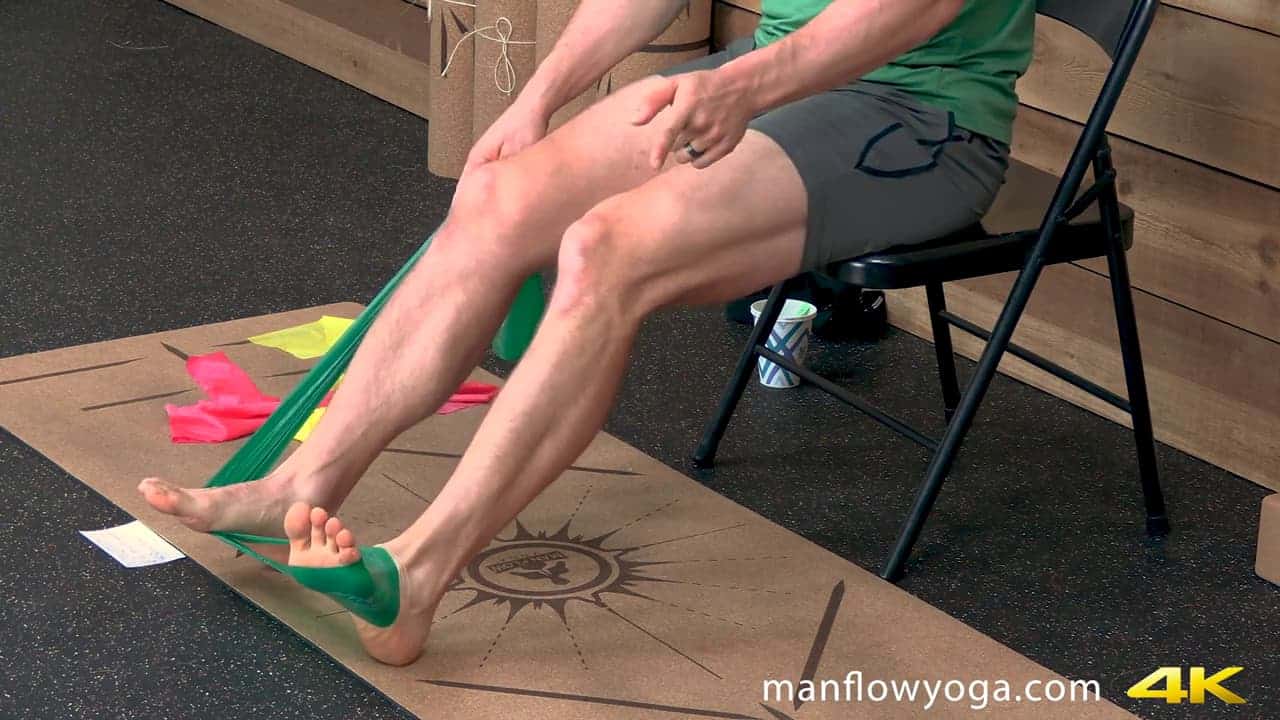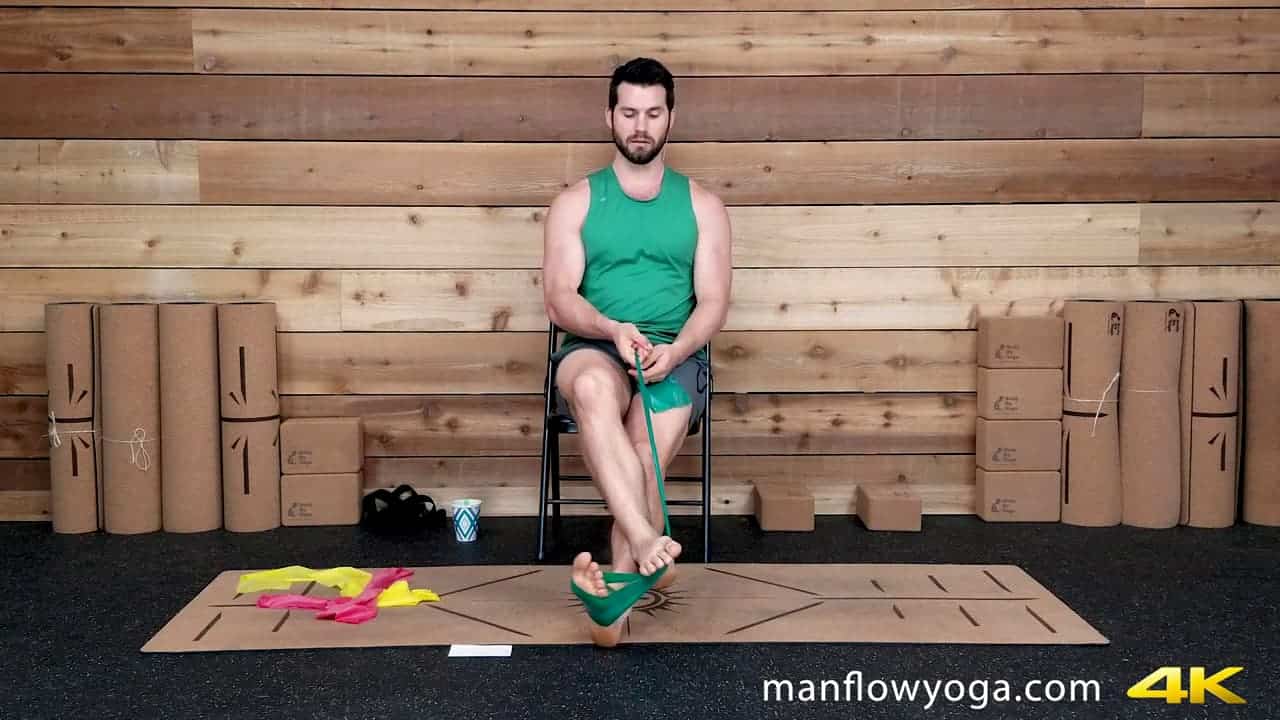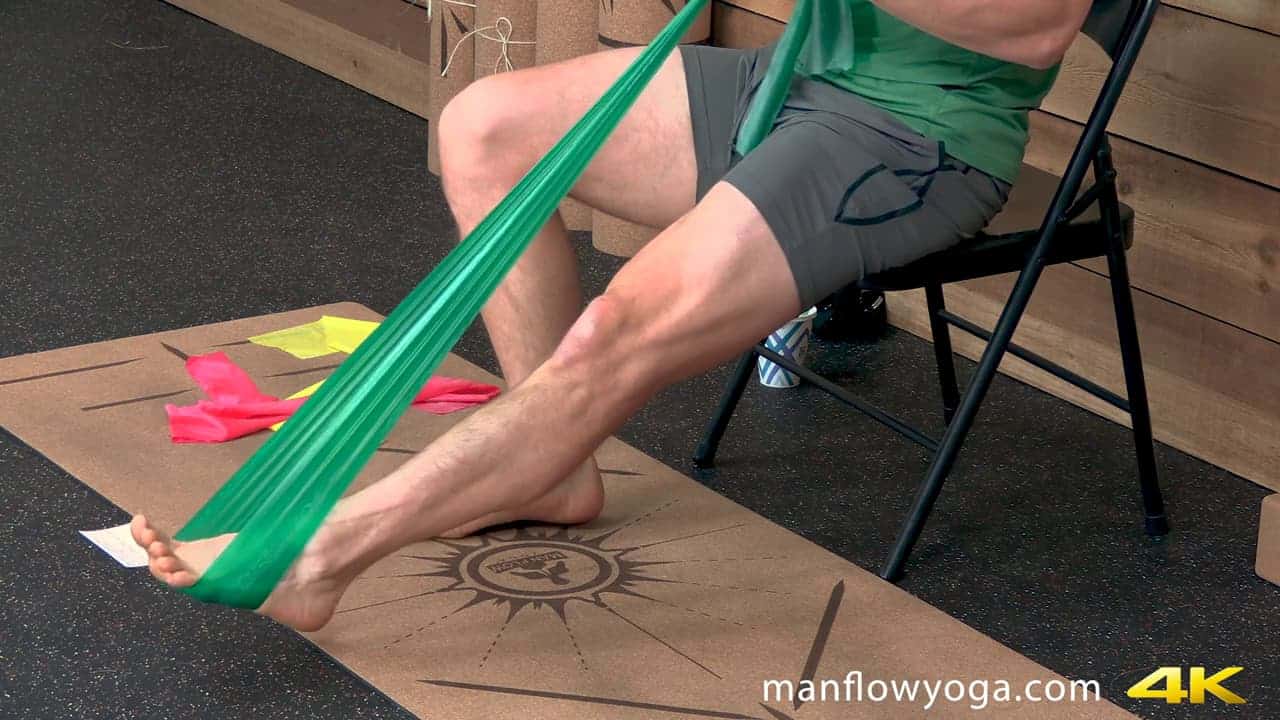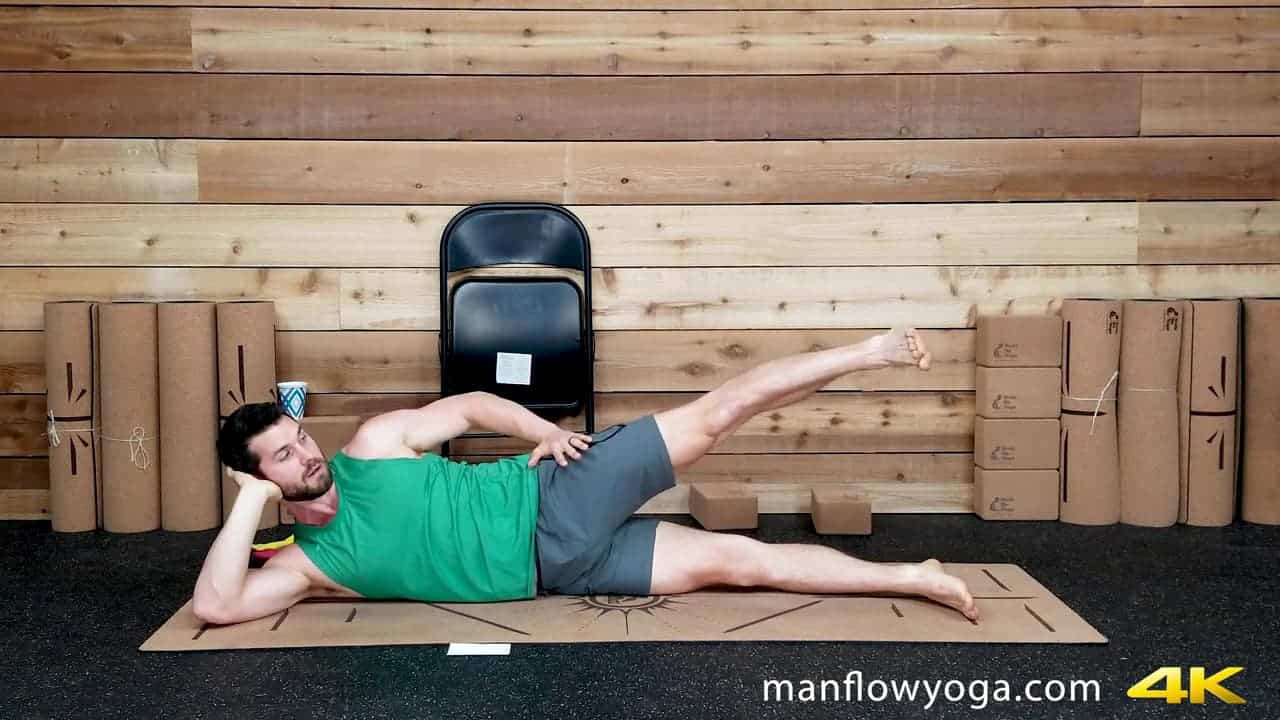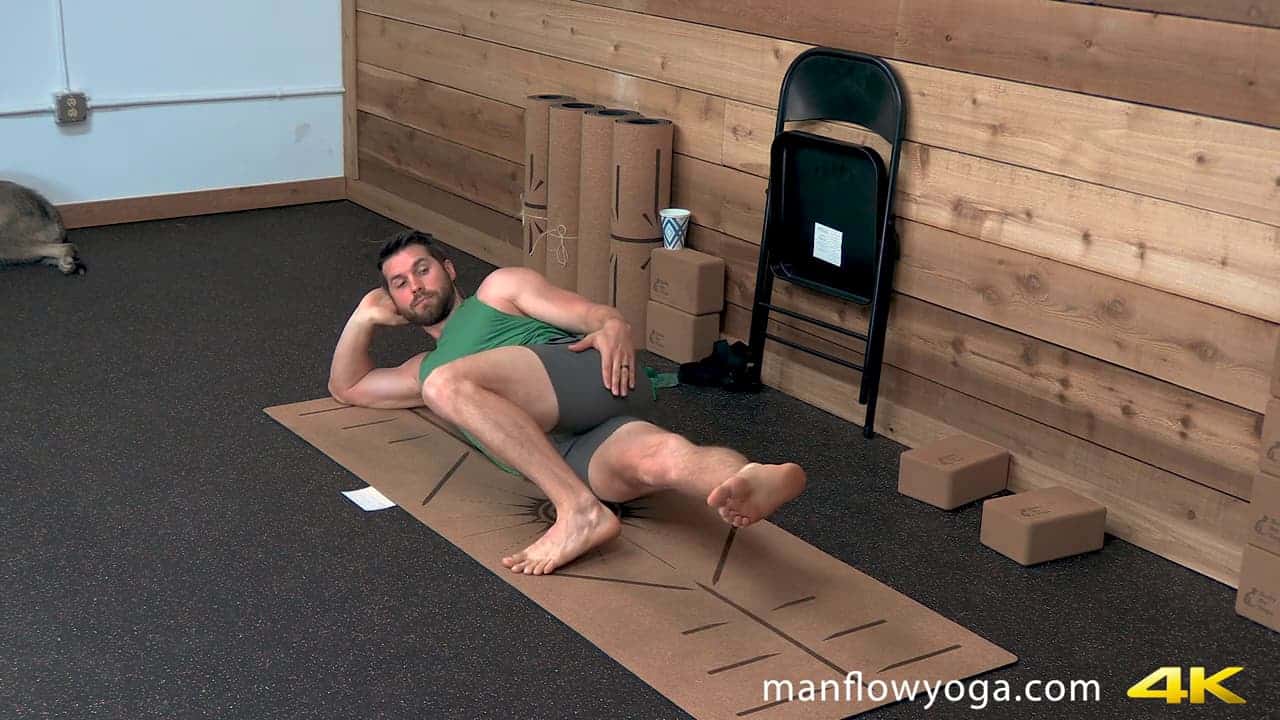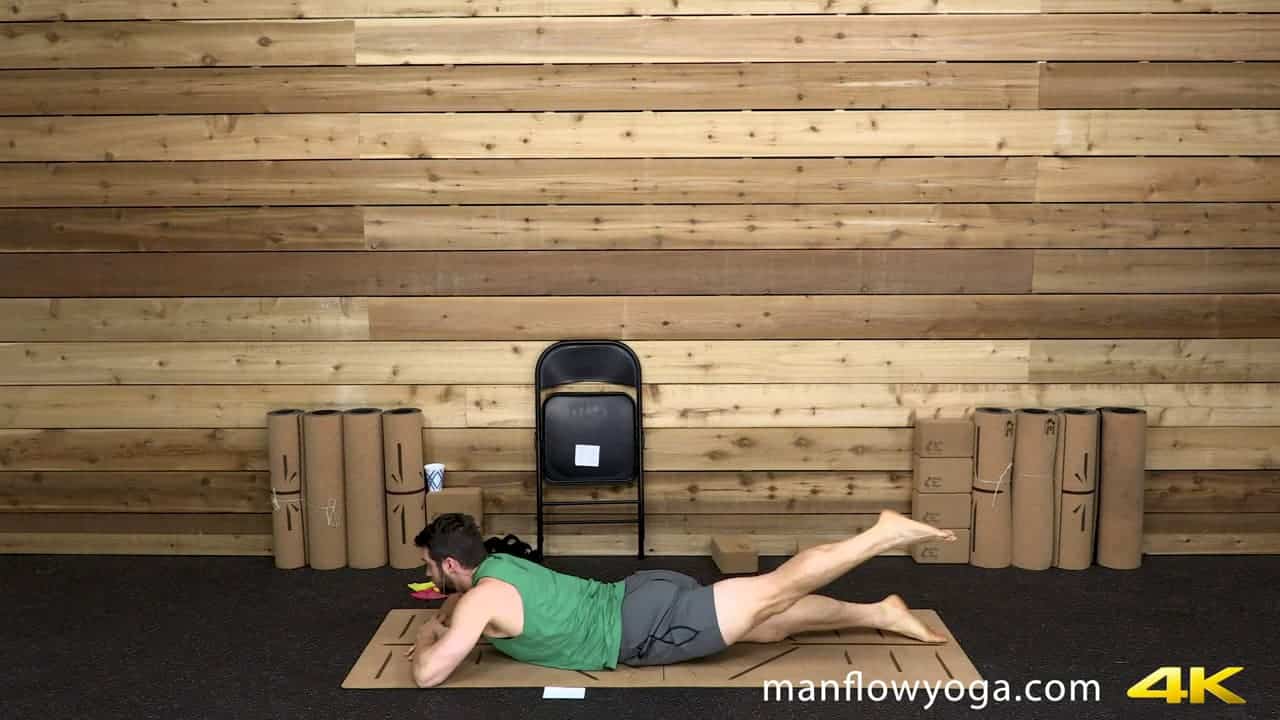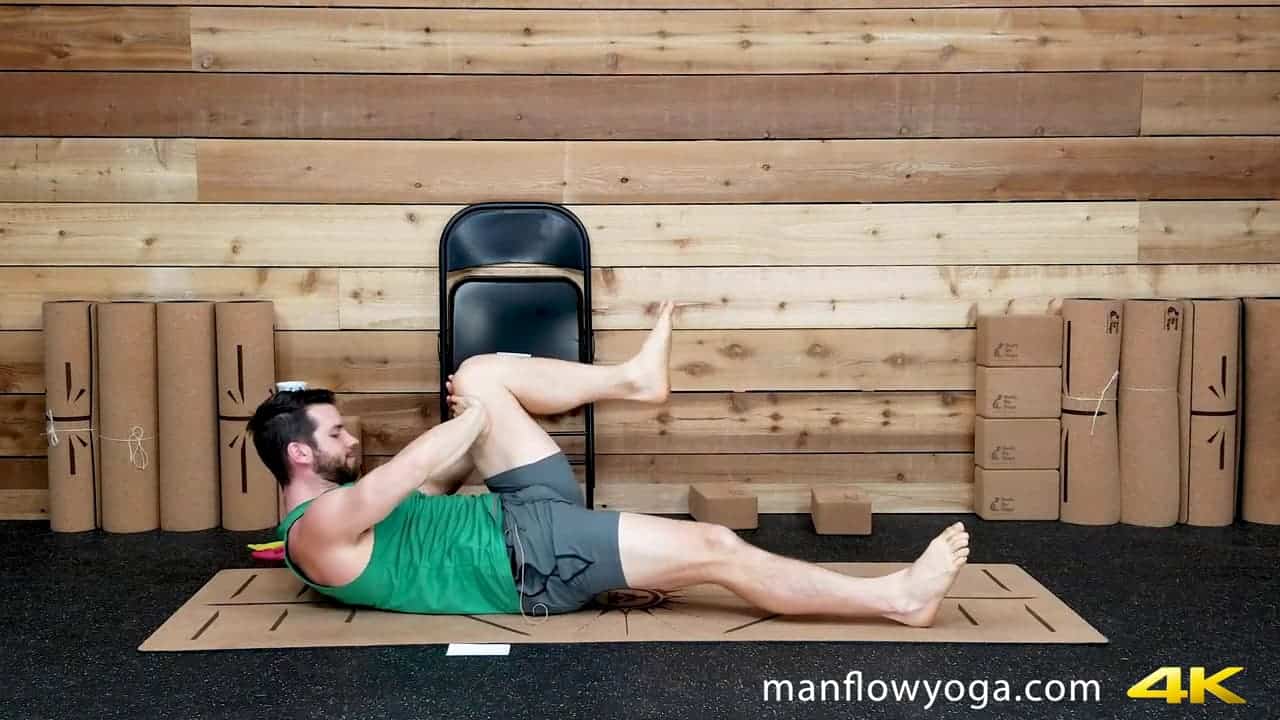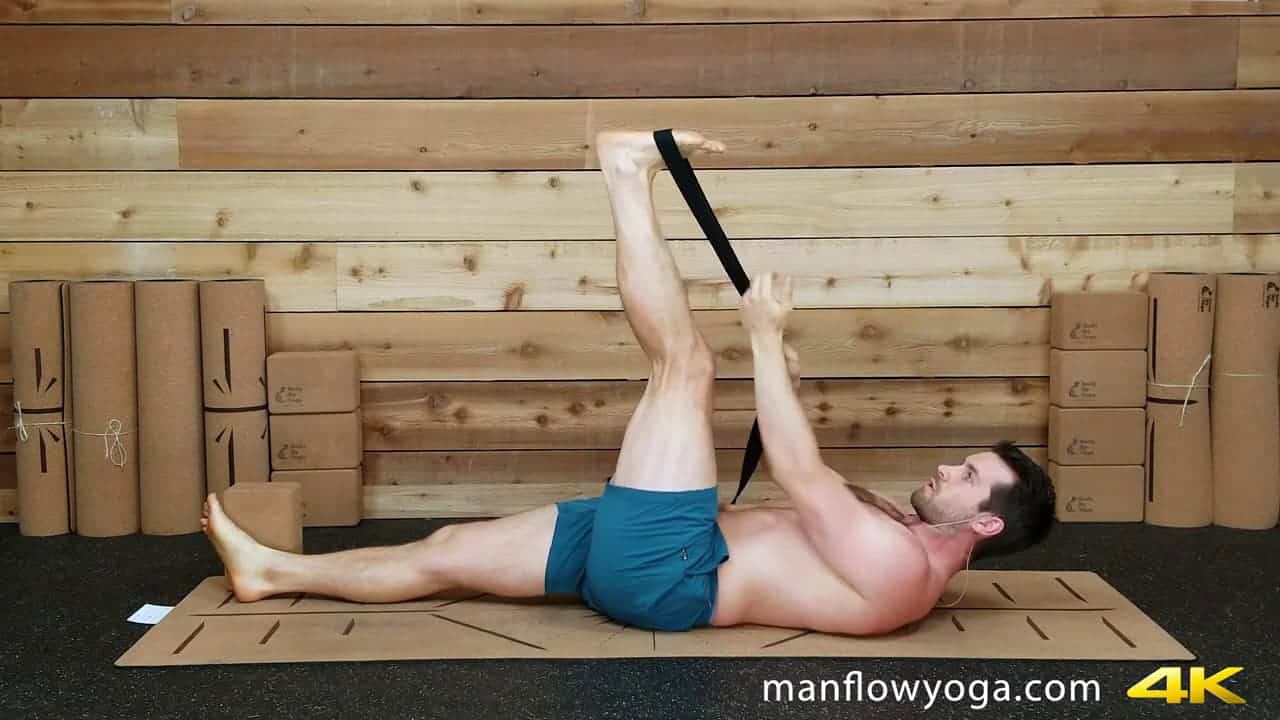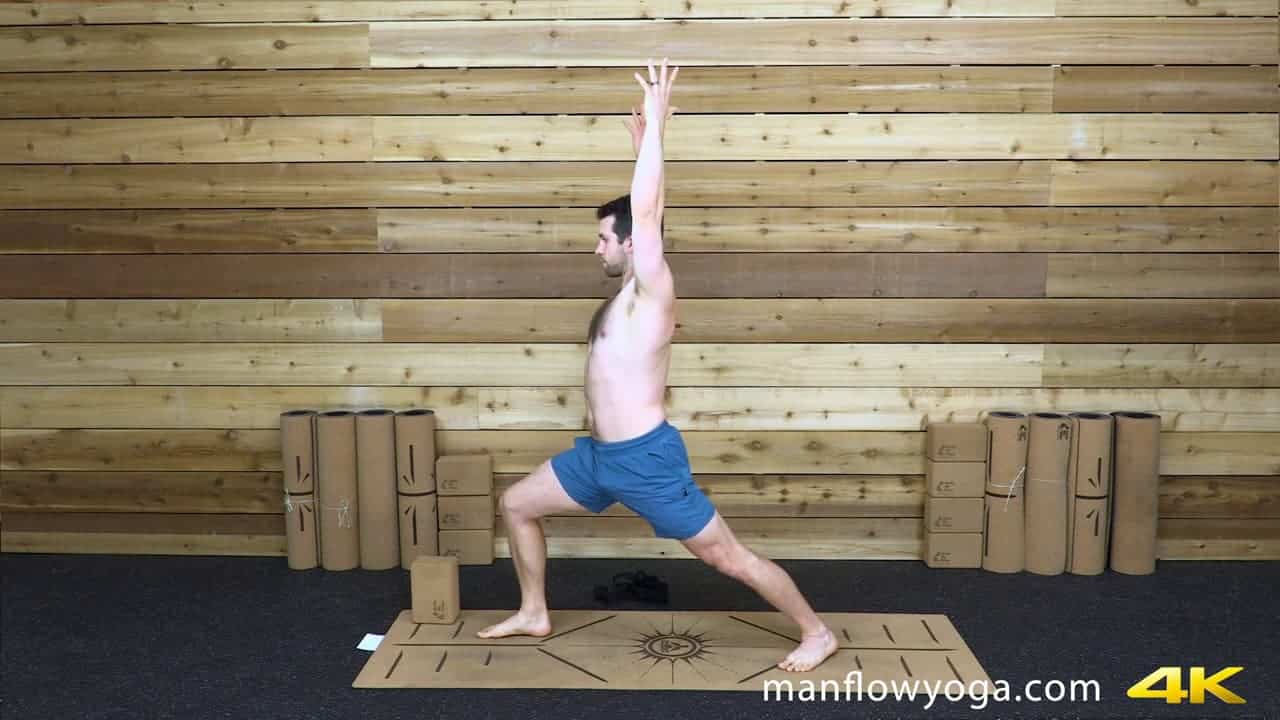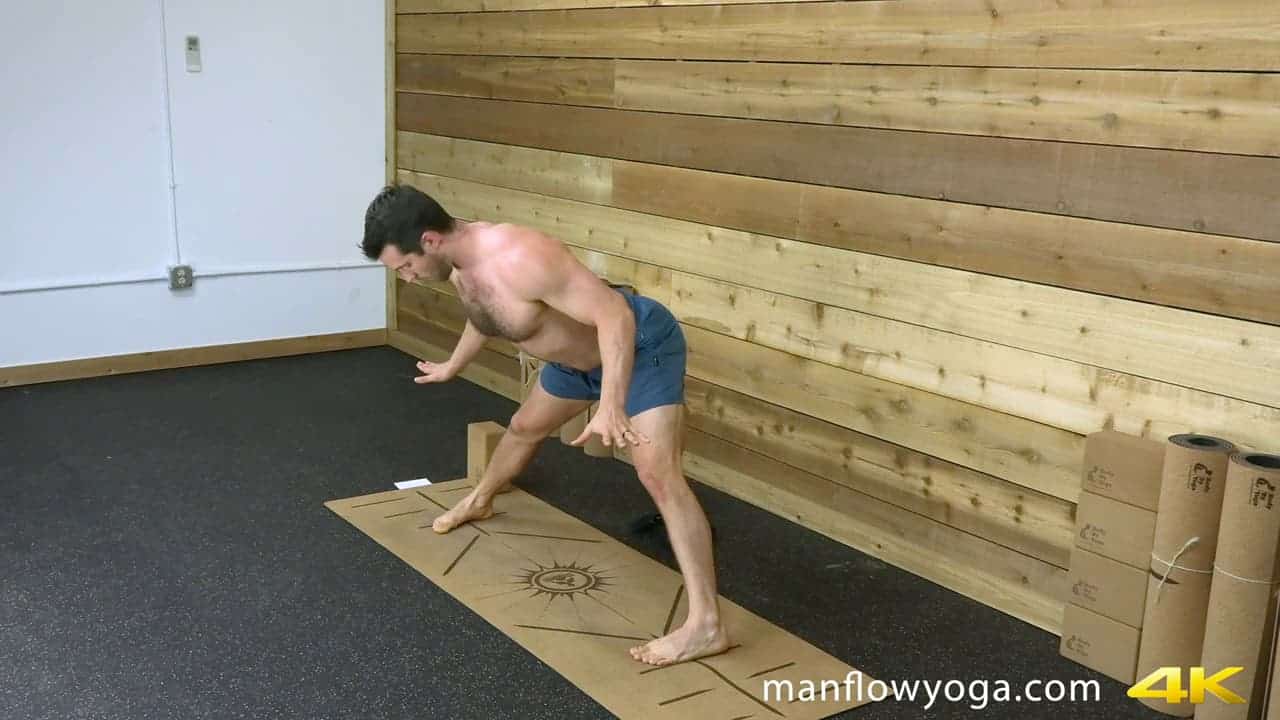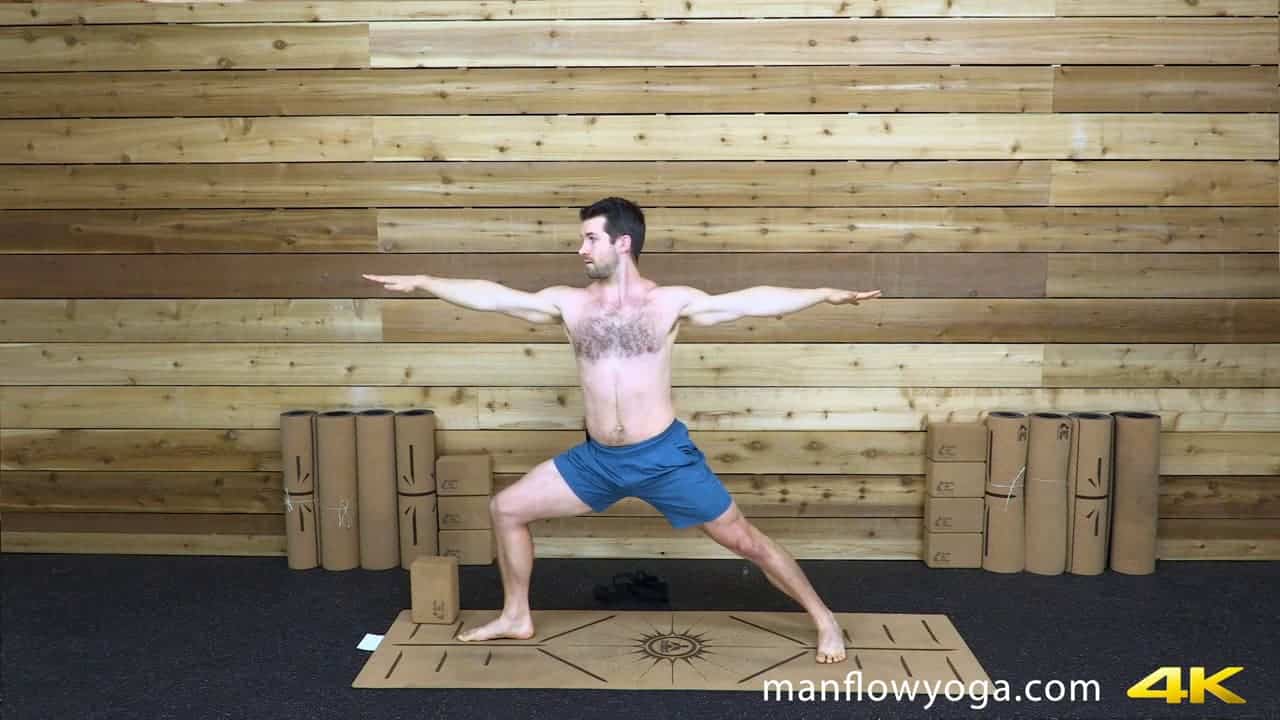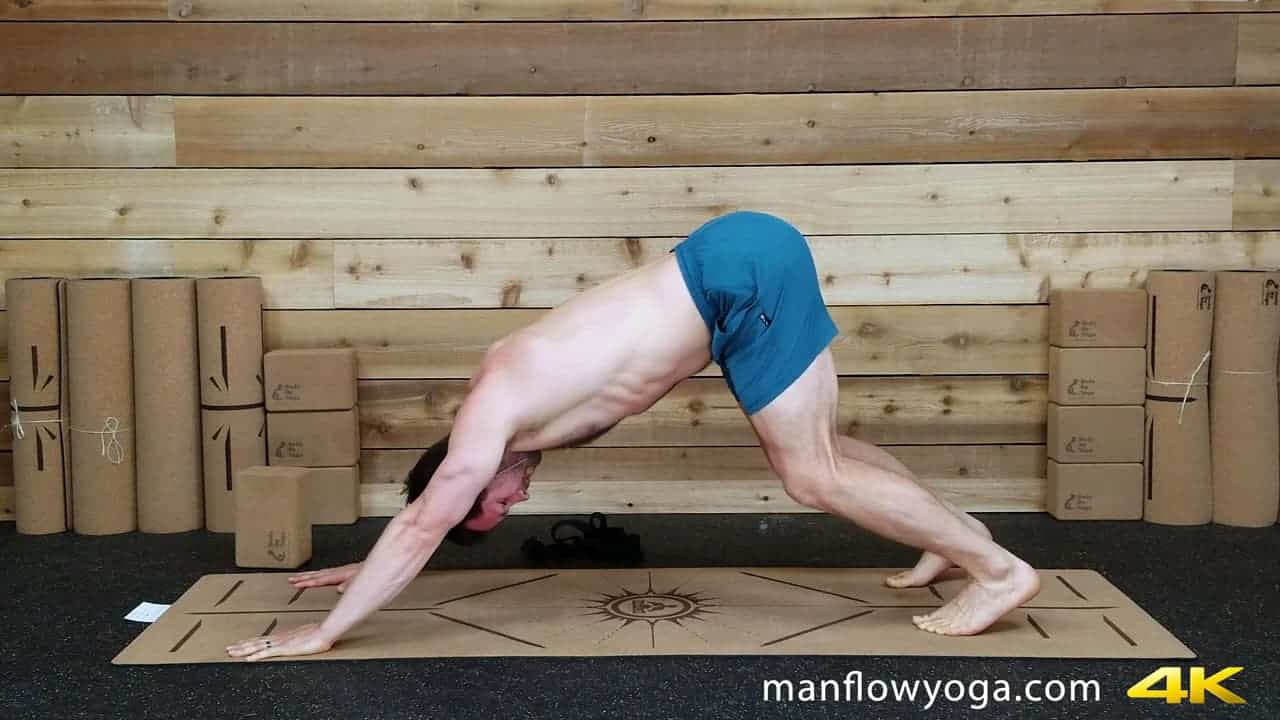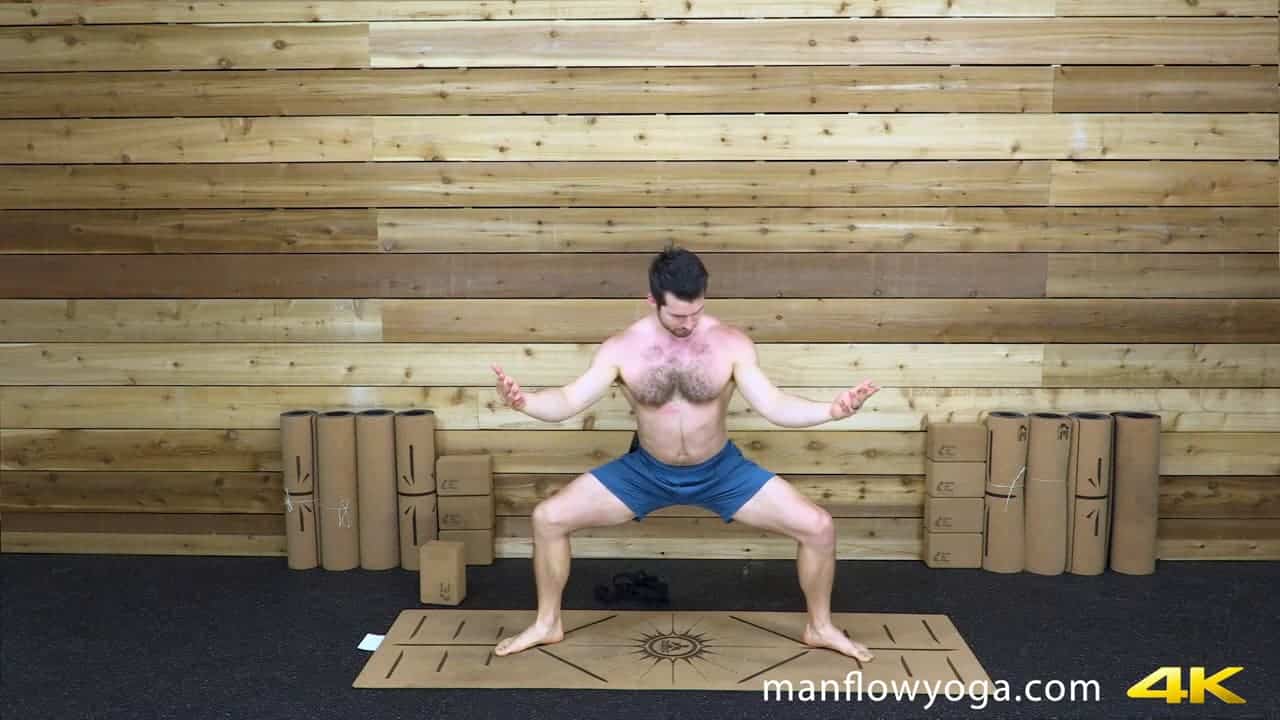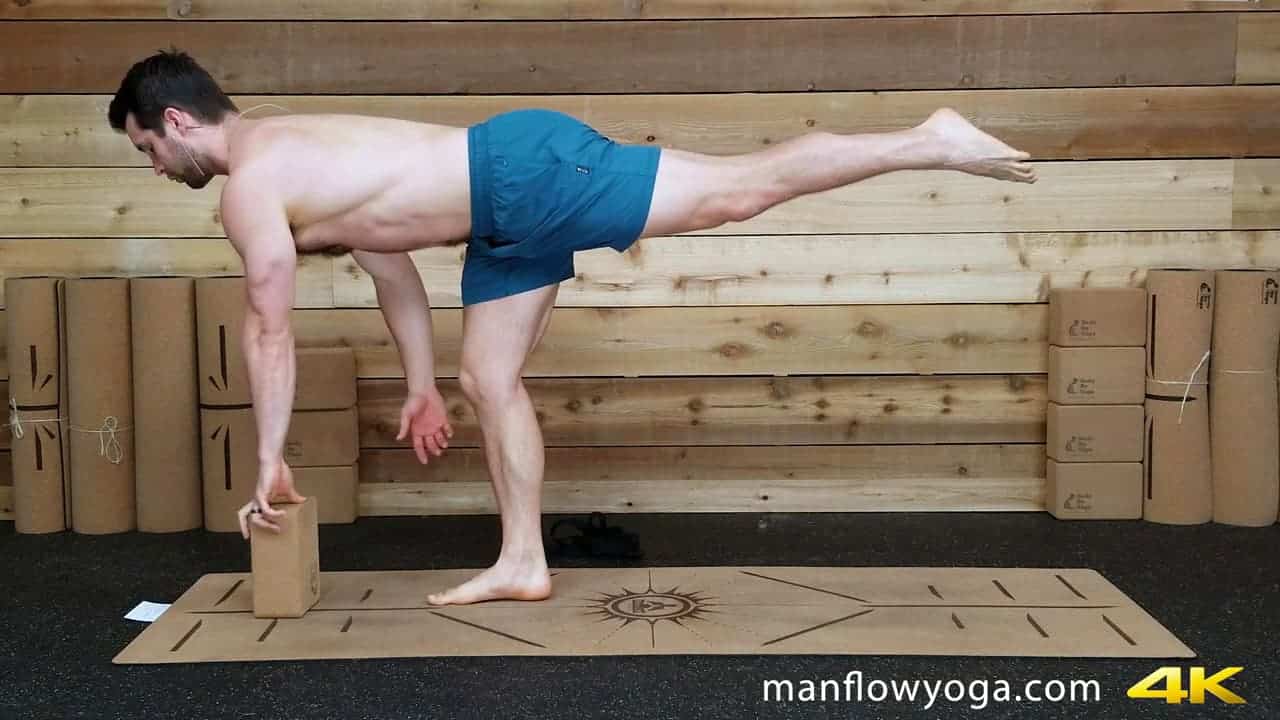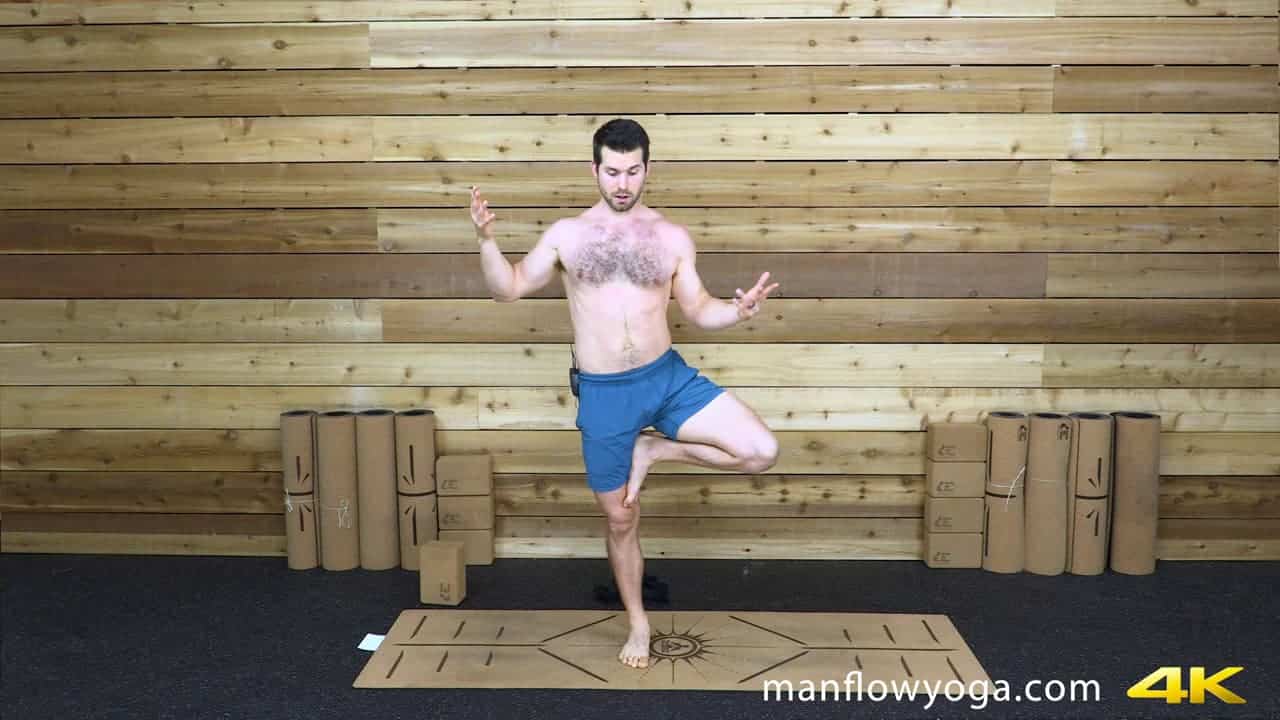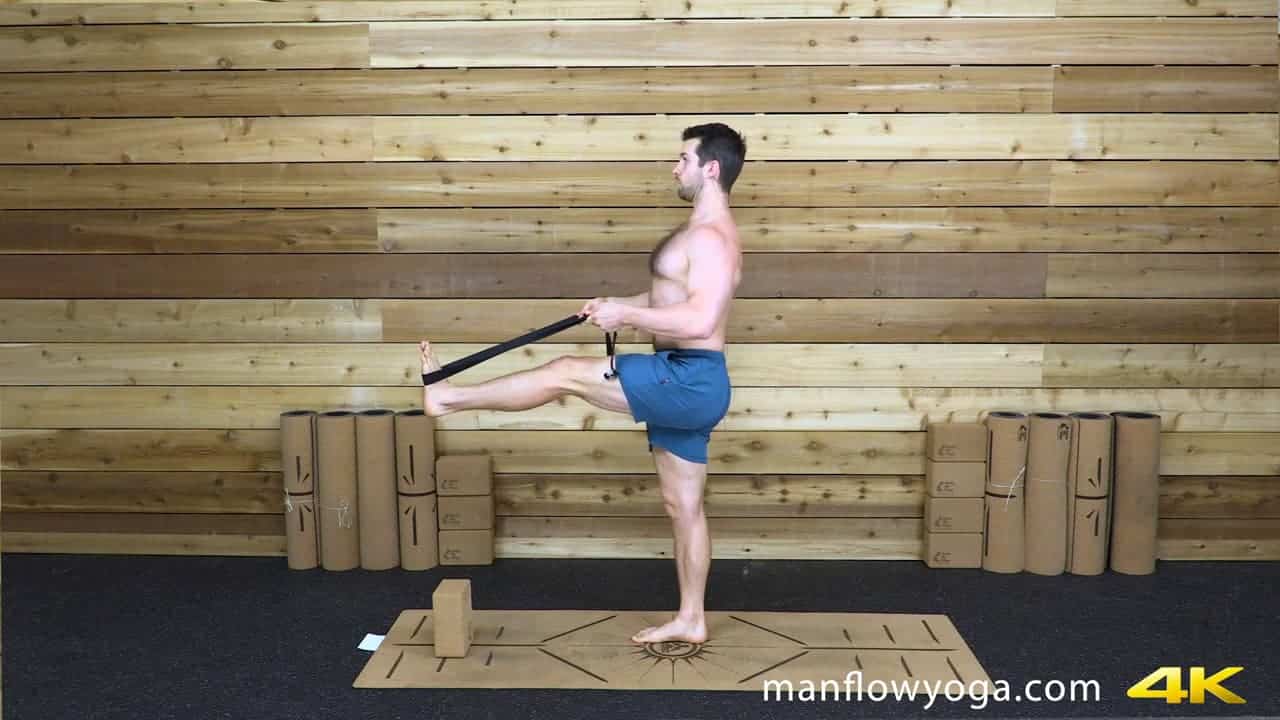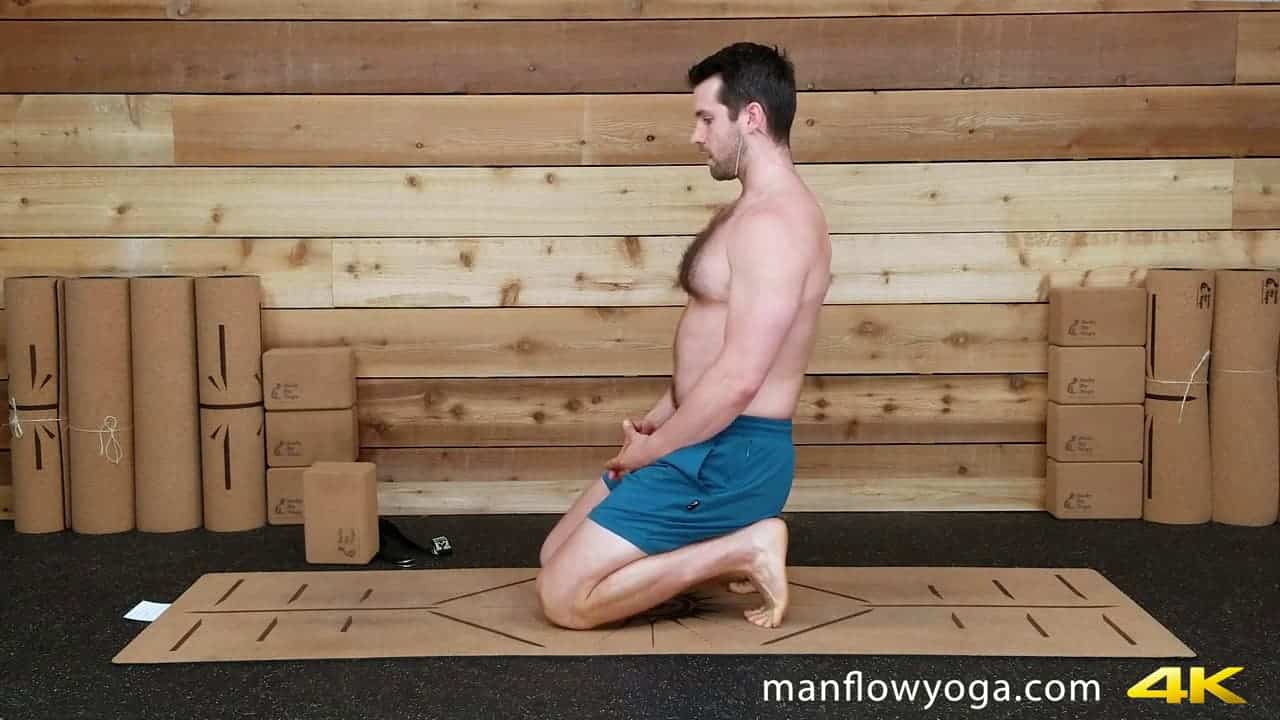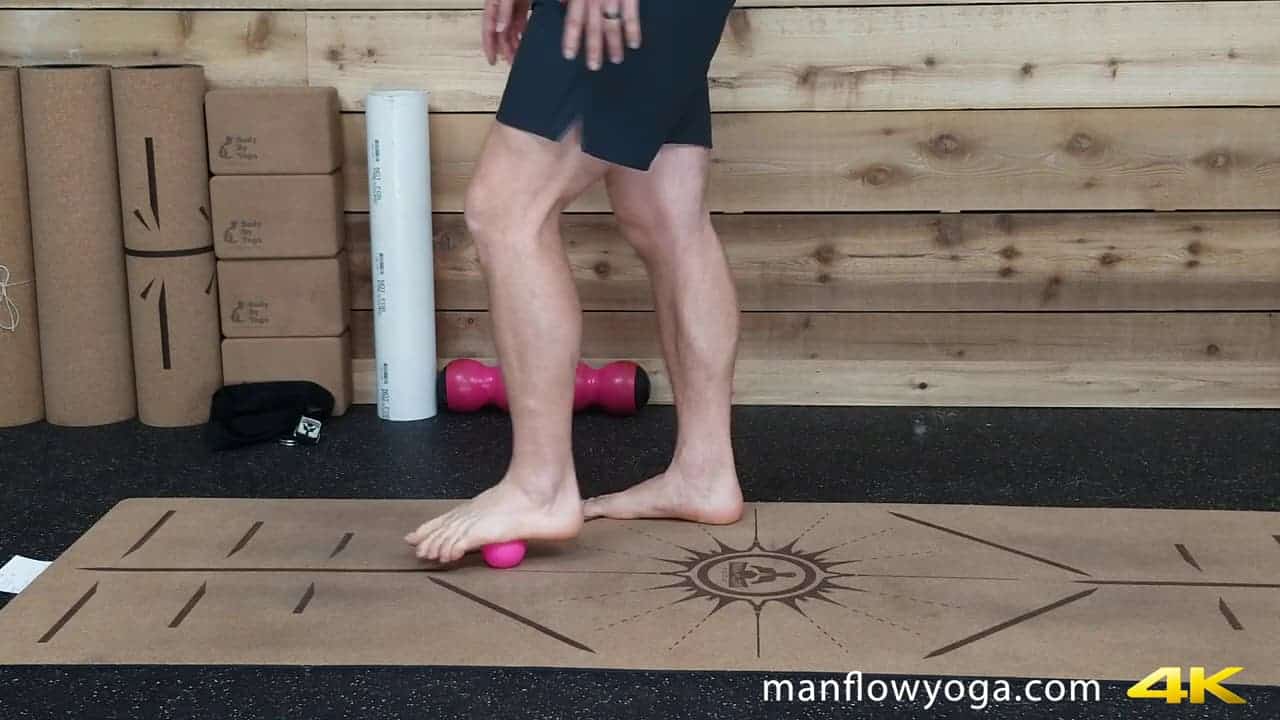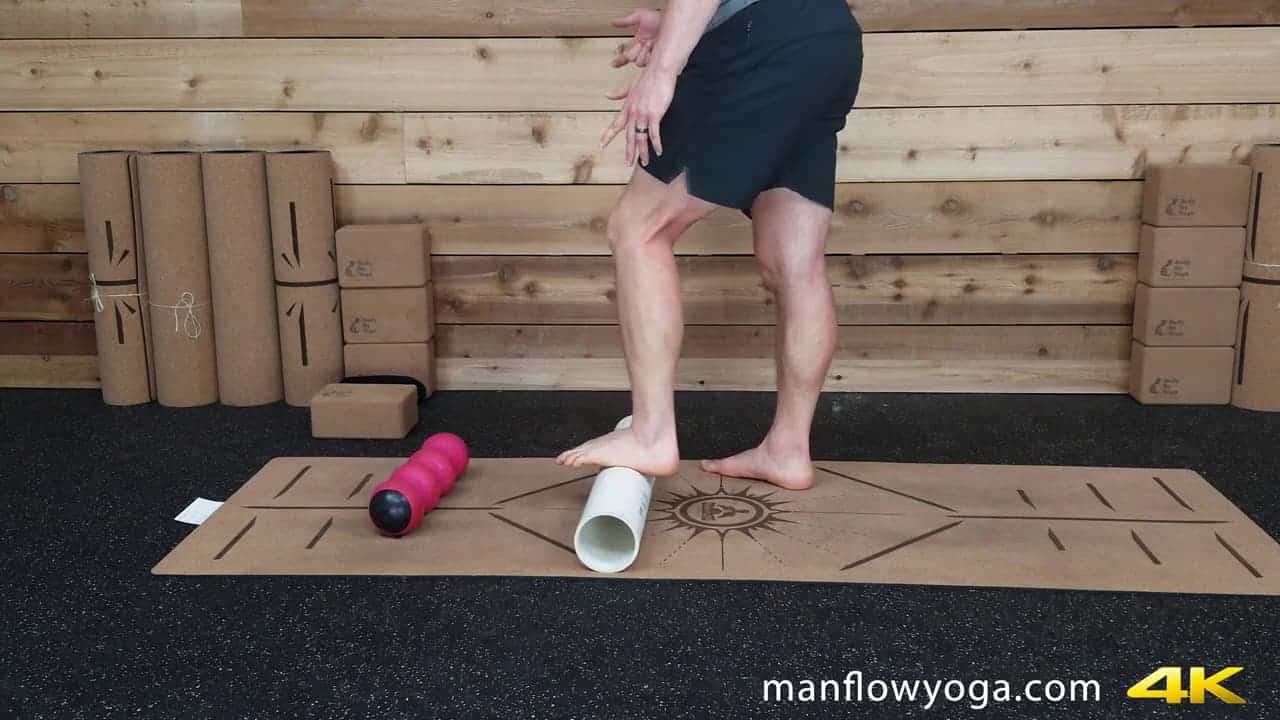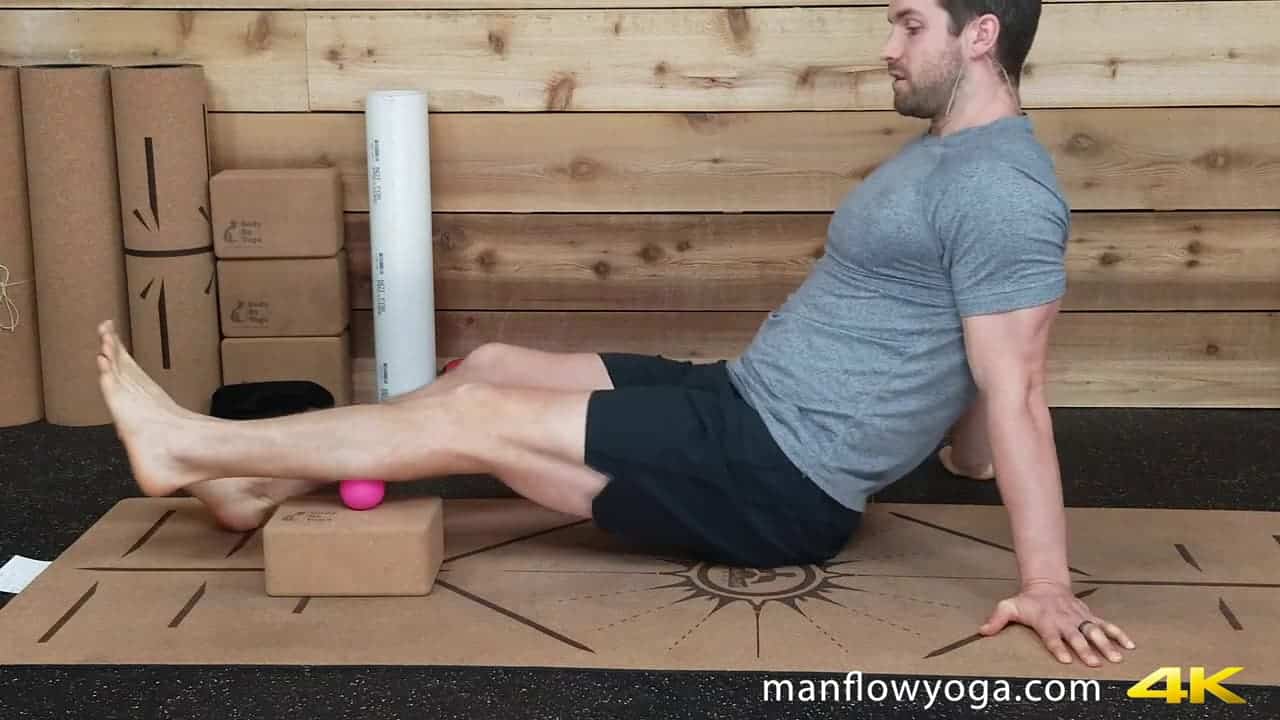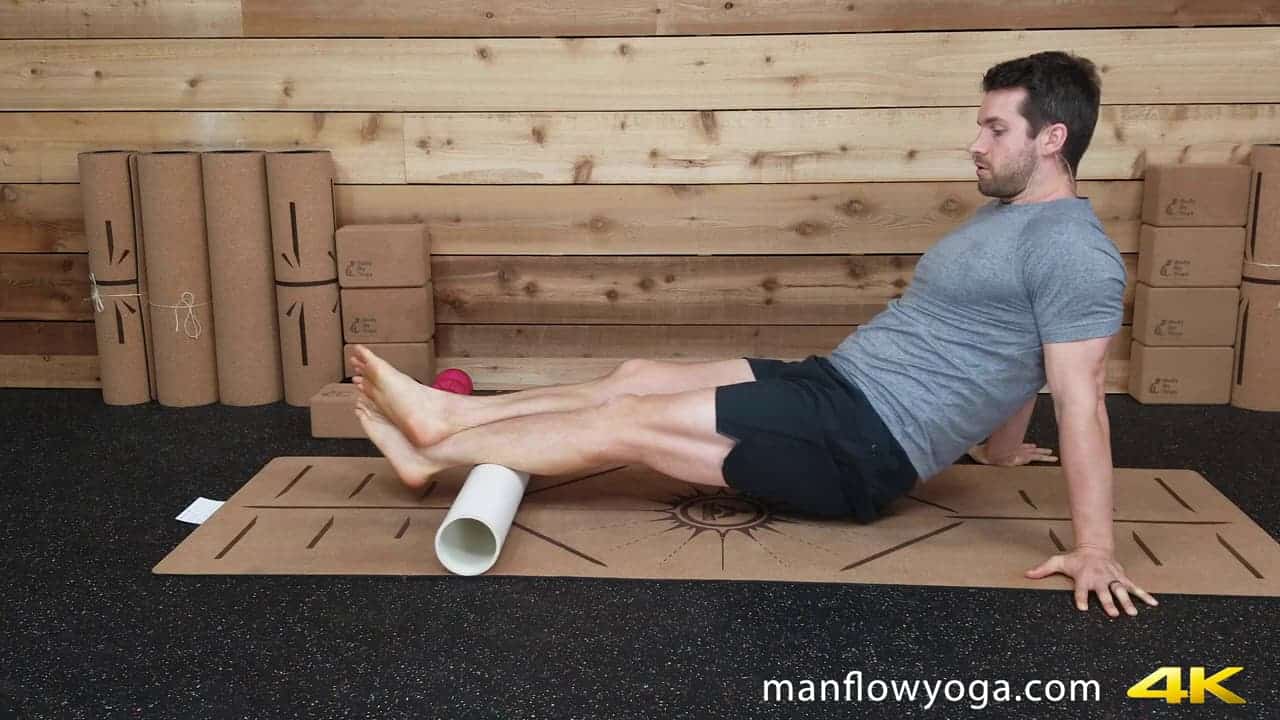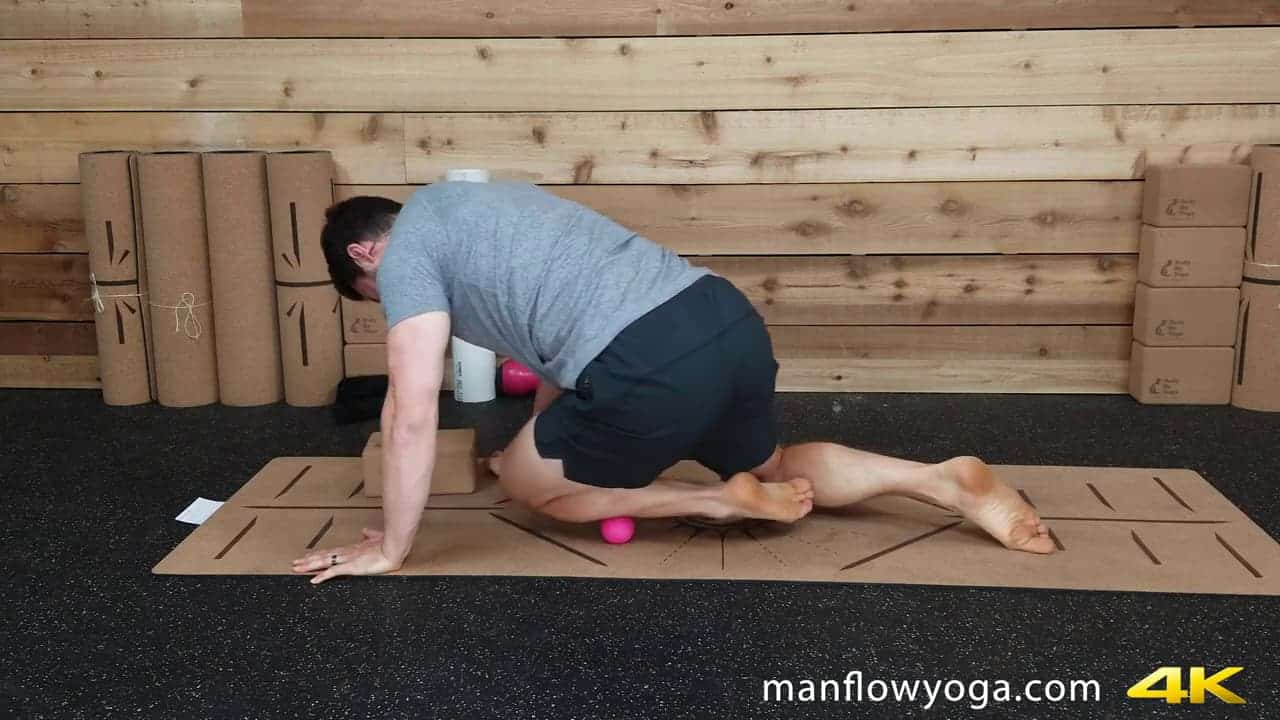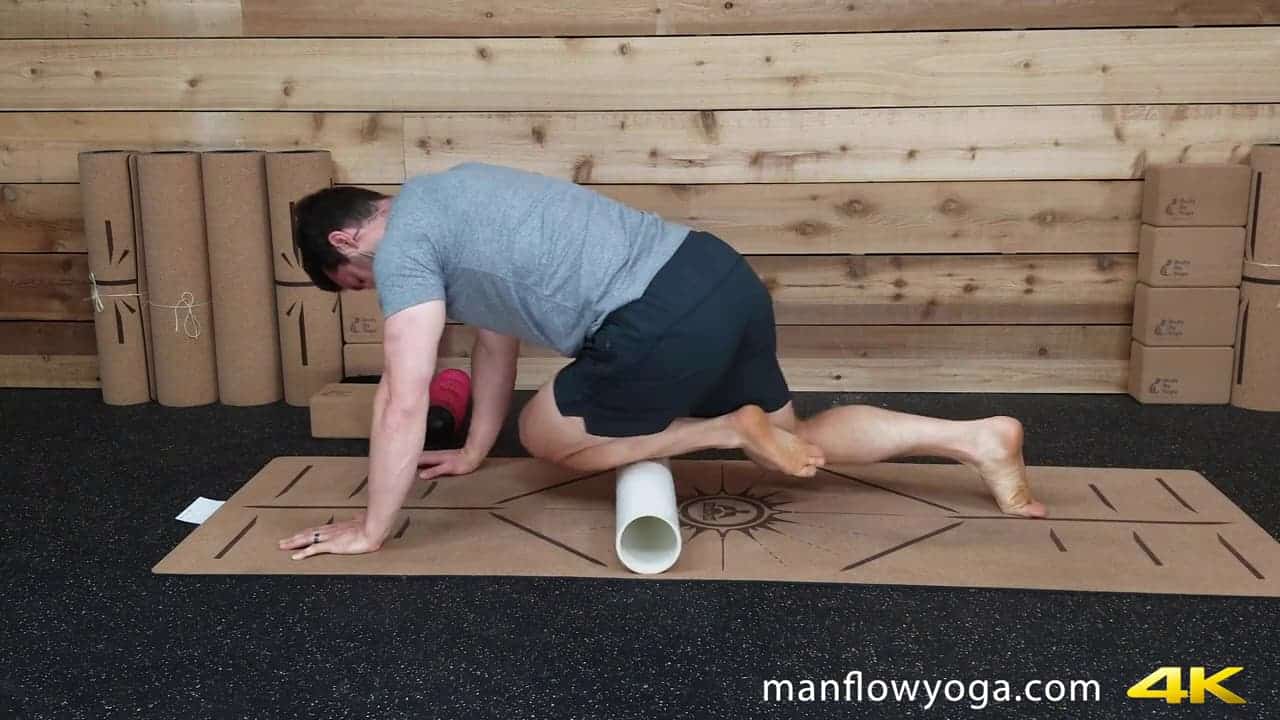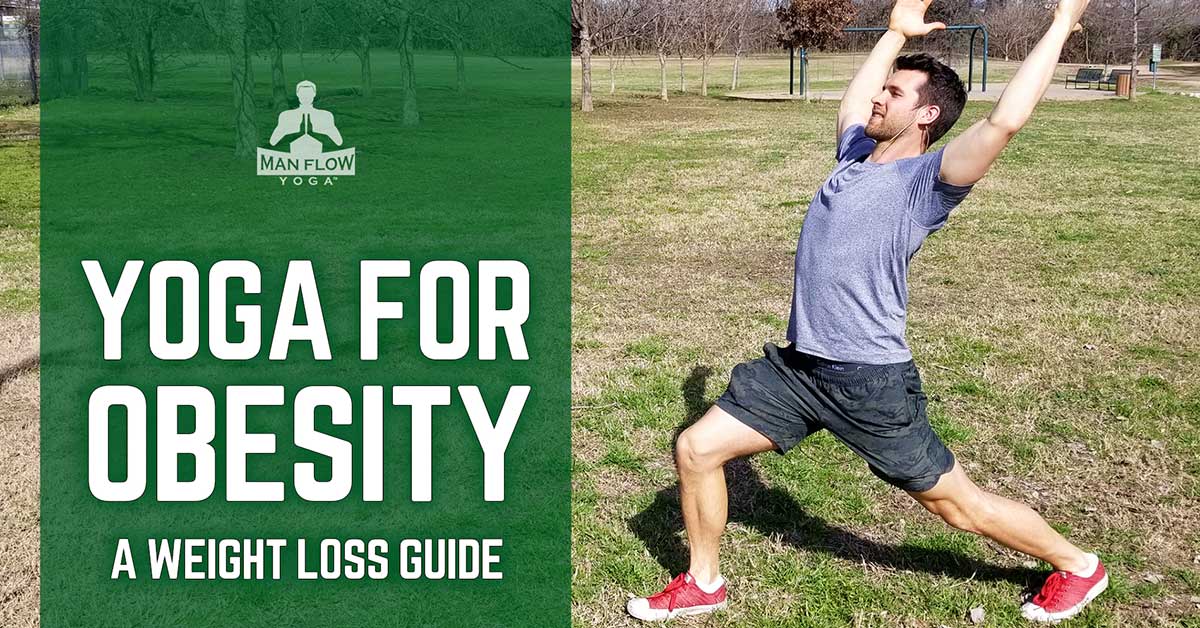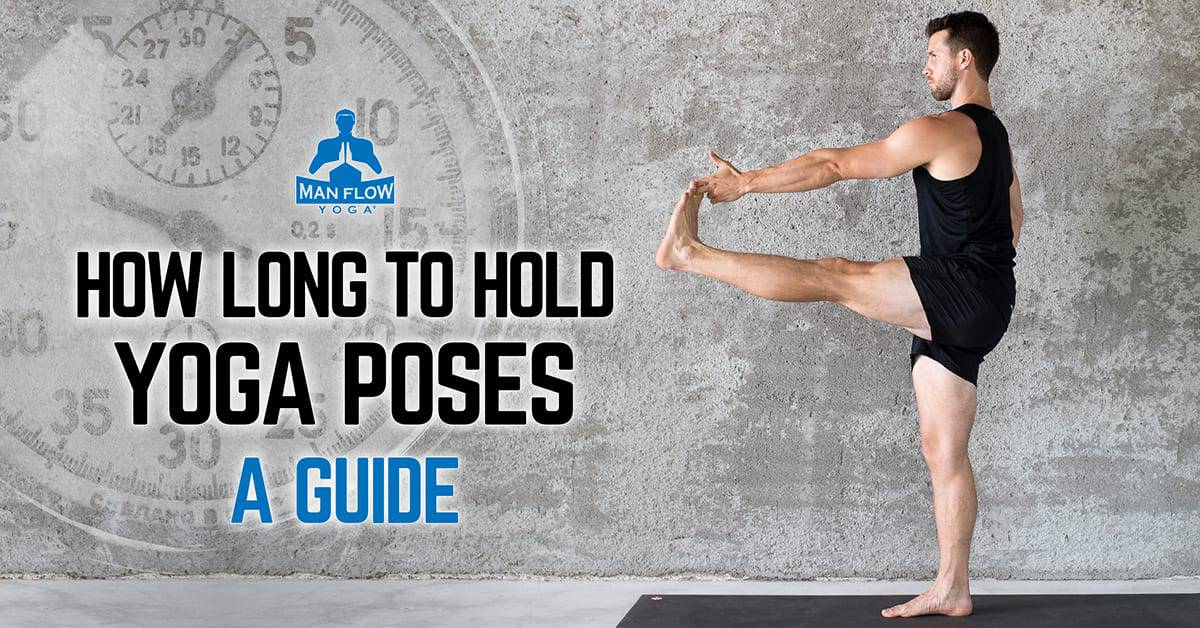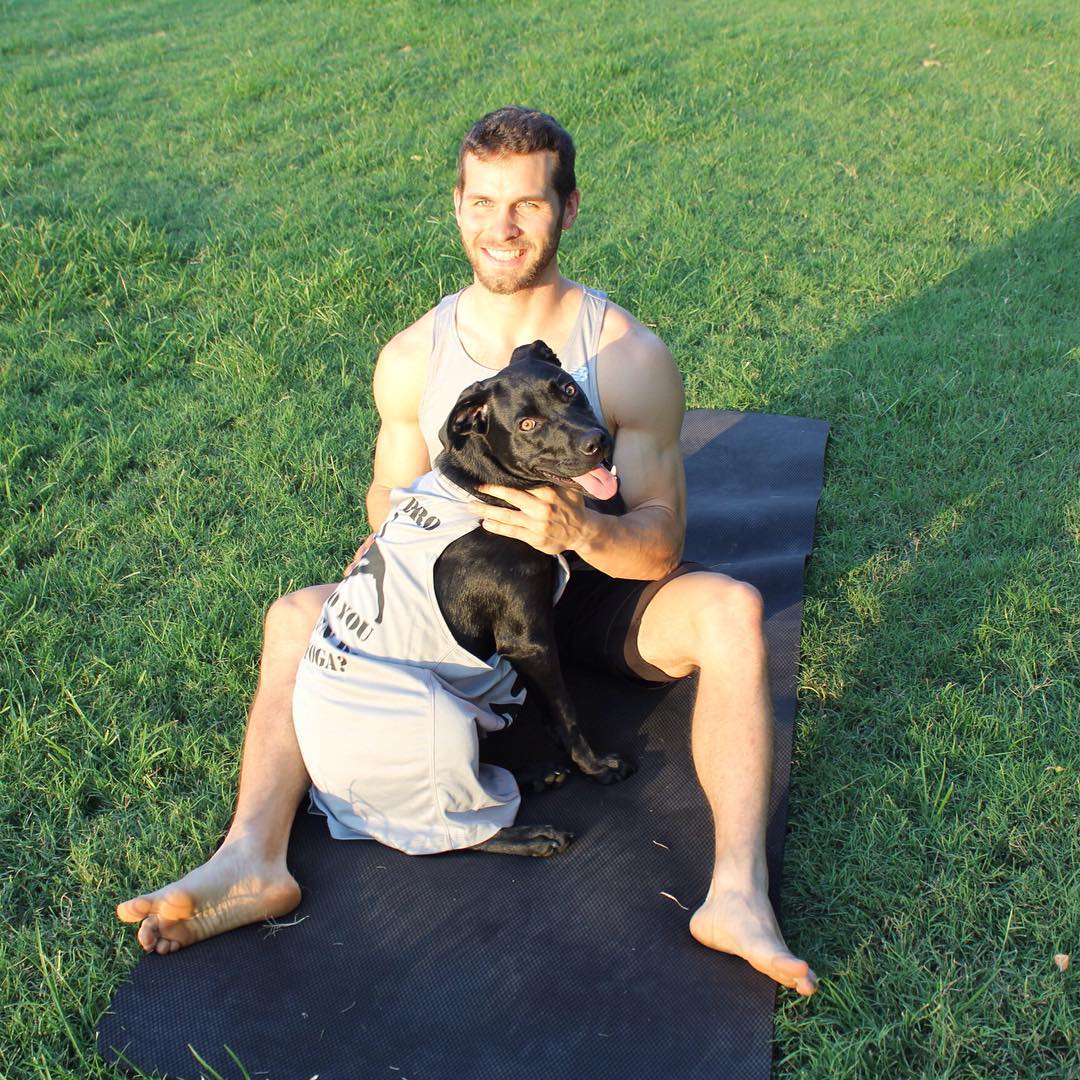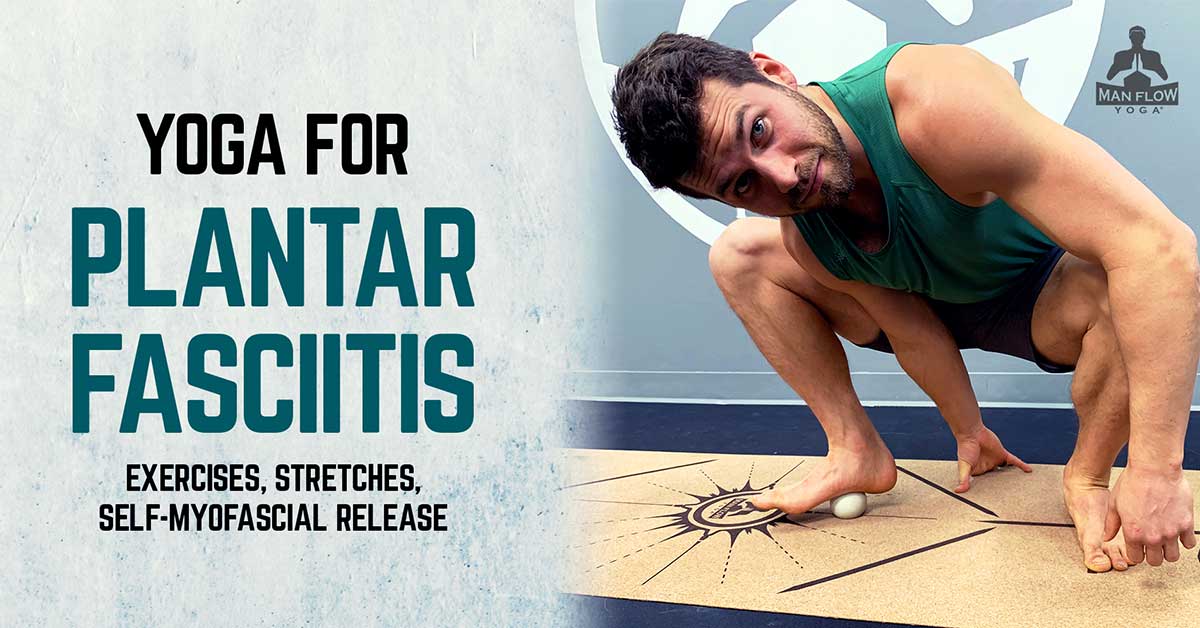A surprising amount of people suffer from plantar fasciitis, aka that stabbing and sometimes shock-like pain by your heel. It can easily interfere with day to day activities and is known to last for months (sometimes even years) if untreated. But fixing it doesn’t require costly steroid shoots or other procedures.
A good yoga routine paired with mobility work can help reduce or even resolve your plantar fascitis’s symptoms and help you avoid months of pain. In this blog, I’ll share my exercises, stretches, and self-myofascial release techniques to resolve your symptoms.
I’ll cover:
- What is Plantar Fasciitis
- What Are The Causes of Plantar Fasciitis
- How Does The Core Affect Plantar Fasciitis
- How Can Yoga Help With Plantar Fasciitis
- Physical Therapy Exercises for Plantar Fasciitis
- Yoga Stretches for Plantar Fasciitis
- Self-Myofascial Release for Plantar Fasciitis
What is Plantar Fasciitis?
Plantar Fasciitis is primarily an overuse type of injury, where the soft tissue (plantar fascia) that connects your heel to the front of your foot develops micro-tears. This is often due to the sudden increase in your activity level prior to the onset of pain.
However, recent studies have shown that the plantar fascia isn’t the only source of heel pain. In fact, the condition has been renamed to “plantar heel pain” because the pain can be caused by soft tissue or boney origins.
You’ll notice the pain most with your first few steps in the morning or after long periods of sitting. The pain is usually worst walking around barefoot or on hard surfaces.
How long does plantar fasciitis last? – Without treatment, the pain can persist and hinder your daily life for months.
The good news is most cases can be effectively treated with conservative care – aka a good yoga routine paired with mobility work.
What Are The Causes of Plantar Fasciitis?
Plainly speaking, plantar fasciitis is caused by a mechanical strain or stress on the plantar fascia or other structure supporting and cushioning your foot. Repeated stressors can cause tearing or inflammation, resulting in pain.
Risk factors include:
- Age – Adults between the ages of 25-65 are at higher risk or developing plantar fasciitis
- Weakness – Weakness in your core, hip adductors & abductors, glutes, or obliques can cause plantar heel pain from misalignment & incorrect gait.
- Excessive running – Prolonged running without proper training and strengthening is a huge risk factor.
- Sudden increase in running distance or weight-bearing activities – Without properly adjusting to exercise you run the risk of developing injuries such as heel pain.
- Pes Planus – aka. “Flat feet” causes overpronation of the foot causing extra strain in the foot and ankle.
- Tightness of Achilles Tendon – The Achilles tendon plays an important role in aligning and maintaining your gait or stride, tightness can cause extra strain on the foot.
- Obesity / Weight Gain – Excess weight puts extra strain on your plantar fascia.
- Pregnancy – The extra weight of pregnancy puts extra strain on your plantar fascia.
- Activities / Jobs with Prolonged Standing – Professions where you are always moving and walking on hard surfaces are at higher risk of damaging their plantar fascia.
Those are the usual direct causes of plantar fasciitis, but other factors are often overlooked that can contribute to plantar fasciitis. We often tend to focus on the problem area (your foot), but overlook the weaknesses in your core and lower body that are affecting your alignment and gait.
How Does The Core Affect Plantar Fasciitis?
Our core affects almost every aspect of our body alignment, including your hips, knees, and feet. But your core isn’t merely your abs, it includes your stomach muscles, sides, back muscles, hip flexors, and glutes.
Weakness in your core and glutes can contribute to improper body mechanics and alignment which can affect your lower body – yes, all the way down to the position and mechanics of your feet. These imbalances can lead to excessive pronation of your foot.
But why is this important to you?
Excessive pronation or overpronation means that the arch of your foot is flattened or lowered. This causes an extra strain on your muscles, tendons, and ligaments in the foot and ankle. In turn, this can lead to developing plantar fasciitis.
How Can Yoga Help With Plantar Fasciitis?
Because Plantar Fasciitis isn’t only associated with the tightness of the plantar fascia, but also with the strength and mobility of your lower leg (the foot, ankle, calf, and Achilles tendon), it’s important to incorporate a good strength-based yoga routine that uses targeted strengthening exercises, stretches, and mobility work to help alleviate and fix the causes of plantar fasciitis.
Yoga Stretches & Relieves Tension in Muscles
Plantar heel pain is caused by tightness of your plantar fascia (the arch of your foot), Achilles tendon, gastrocnemius & soleus (calf muscles), and hamstrings, so stretching these muscles can help alleviate these contributing factors.
That’s where yoga comes in.
Many stretches found in yoga can help to relieve tension in these muscles thus reducing and relieving the symptoms related to plantar heel pain.
However, you do want to be careful not to overstretch, because this can lead to further injury. You should feel a pleasant stretch or even minor discomfort BUT no sharp pains.
I’ll share some of my favorite stretches below.
Yoga Helps Develop Strength in Areas of Weakness
Weakness in the muscles from your hips to your ankles can contribute to overpronation of your foot, leading to developing plantar heel pain, which is why it’s important to strengthen your lower body to prevent this.
A great low-impact way to develop strength while avoiding further injuries is strength-based yoga paired with specific physical therapy exercises aimed at strengthening your hips, calves, ankles, and feet.
These exercises include foot & ankle strengthening, balancing poses, and hip strengthening. I’ll cover the exercises in more detail below.
Interested in starting a yoga program with Man Flow Yoga to gain strength, flexibility, and mobility, BUT don’t know where to start? We got you covered. Give our FREE 7-Day Challenge a try. Sign-up below! Signup for the FREE 7-Day Challenge
Not Exactly Yoga, But Mobility Work Is VERY Important
Any injury develops “scar-tissue” which is a fibrous tissue that forms when normal tissue is destroyed. It’s our body’s way of healing and helps provide structure and strength to torn muscles, tendons, and ligaments. Think of it like tape holding together a torn box.
So why do you need to get rid of it?
The problem arises when prolonged overuse type injuries, like with plantar fasciitis, causes too much scar tissue to form, restricting your mobility and ability to utilize the injured area.
That’s why it’s paramount that you use self-myofascial release techniques with a lacrosse ball or similar object to target these adhesions and improve mobility. Though these techniques might be uncomfortable, you’ll be better off with less-pain & more strength in your foot.
My techniques for self-myofascial release for your foot is covered down below.
Physical Therapy Exercises for Plantar Fasciitis
If you’d rather read about the exercises they’re down below! Be sure to keep scrolling to learn about yoga exercises & self-myofascial release routines for yourself!
Calf Strengthening:
Double Leg Heel Raises
Technique:
- Stand on an elevated surface such as 2 yoga blocks with your heels hanging off
- Press upwards on the balls of your feet, engaging your calves, and raising your body up
- Externally rotate your ankles; your heels should be closer together as you lift up
- Lower yourself with control
- Repeat
Modifications: If you need more of a challenge, do this as a single leg calf raise. If this is too difficult for you, use a wall to assist you or try them in a seated position.
Reps: 3 x 10
Eccentric Calf Work
Technique:
- Stand on an elevated surface such as 2 yoga blocks with your heels hanging off
- Press upwards on the balls of your feet, engaging your calves, and raising your body up
- Lower yourself slowly aiming for 4-5 seconds.
- Repeat
Modifications: If you need more of a challenge, do this as an eccentric single leg calf raise with one foot extended out in front of you. If you need less of a challenge, use a wall to assist you or try them in a seated position.
Reps: 3 sets of 5-8, build up to it if these are too difficult.
Shortfoot Exercise – aka “doming”
Technique:
- Have your feet firmly planted on the ground
- Without curling your toes too much, try to raise the arch of your foot
- Visualize shortening your foot and raising your arch
- You should feel this in your ankle
- Repeat on other side
Progression:
- Start with seated position
- Progress to standing (both feet)
- Progress to balancing on one leg
Reps: 5 reps each foot holding for 5 secs each hold.
Marble Pickup
- Sit on a chair with your feet flat on the ground.
- Place 20 marbles (or small objects) and a bowl in front of you.
- Pick one marble up at a time with your toes, placing them in the bowl.
- Repeat another 20 times with your other foot.
Note: If you don’t have marbles, you can use other small items such as batteries or legos (just make sure not to step on the legos – that sucks).
Ankle Strengthening: 4-Way T-Band Exercises:
Eversion (abduction, away from body)
Technique:
- With your legs out in front of you, wrap a resistive band around the ball of your foot with the knot on the inside, and then anchor it around the other foot.
- Keeping the leg straight, and only moving at the ankle, pull outward with your foot, and control it back in.
Reps: 2 x 10
Inversion (moving toward body, adduction)
Technique:
- With your legs out in front of you, cross the leg of the ankle to want to exercise over the other leg. Put the band around the ball of your foot with the knot on the outside, and anchor the other end around the other foot.
- Keeping the leg straight, and only moving at the ankle, pull outward away from the other foot, and control it back in.
Reps: 2 x 10
Plantarflexion
Technique:
- With your legs out in front of you, wrap a band around your foot, holding it closer o your body.
- Trying to keep your leg straight, push your foot down like you are pushing on a peddle, and then back up.
Reps: 2 x 10
Dorsiflexion
Technique:
- With your legs out in front of you, place a resistive band around the top part of your foot, and anchor the band around something in front of your foot.
- Keeping your leg straight, pull your toes up towards your head. Control the band back down.
Reps: 2 x 10
Hip Strengthening:
These exercises can be done laying down or standing up. If you want more of a challenge you can add resistance bands for extra resistance.
Hip Abductor
Technique:
- Start lying on your side with your hips & feet stacked.
- Keep toes facing sideways. Abduct (lift the top leg) away from your bottom leg.
- Repeat
Standing Variation:
- Start standing with your feet facing forward a few inches apart.
- Engage your core and posteriorly tilt your pelvis. (bring your belly button to your butt)
- Lift one leg outwards to the side with control.
- Repeat
Reps: 2×10
Note: Make sure entire body stays aligned sideways (hips & feet remain inline)
Modifications: Add a resistance band for extra resistance.
Hip Adductor
Technique:
- Start lying on your side. Cross one leg over the other, planting that foot in front of the knee of the opposite leg.
- Raise the straight leg on the bottom upwards.
- Repeat
Standing Variation:
- Start standing with your feet facing forward a few inches apart.
- Engage your core and posteriorly tilt your pelvis. (bring your belly button to your butt)
- Lift one leg across your body and upwards.
- Repeat
Reps: 2×10
Note: Make sure entire body stays aligned sideways (hips & feet remain inline)
Modifications: Add a resistance band for extra resistance.
Hip Extension
Technique:
- Lie on your stomach.
- Engage your core
- Lift one leg up while keeping the other leg on the ground.
- Repeat
Standing Variation:
- Start standing with your feet facing forwards a few inches apart.
- Engage your core making sure your back doesn’t overly arch.
- Lean slightly forward
- Squeeze your glutes as you bring one leg straight up behind you.
- Repeat
Reps: 2×10
Note: Make sure to engage your abs to prevent lower back injuries.
Modifications: Add a resistance band for extra resistance.
Hip Flexion
Technique:
- Lie on your back
- Engage your core making sure your back doesn’t lose contact with the ground.
- Lift one leg straight up while keeping the other on the ground.
- Slowly lower the leg back to the ground
- Repeat
Note: If this is too difficult for you, bend the leg you’re raising and push into it with your hands.
Standing Variation:
- Start standing with your feet facing forwards a few inches apart.
- Engage your core making sure your back doesn’t overly arch.
- Push into your feet to stand up tall.
- Raise one leg straight up in front of you without bending your knee.
- Repeat
Reps: 2×10
Modifications: Add a resistance band for extra resistance.
Yoga Stretches for Plantar Fasciitis
Easy Postures:
Reclined Hamstring Strap Stretch
An easy and simple hamstring stretch with straps to assist.
Technique:
- Lie on your back.
- Position a strap on the arch of your right foot, and hold the ends of the strap with both hands.
- Rest your left leg on the floor.
- Keeping the left leg flat on the floor, straighten the right leg.
- Reach the toes of your right foot toward your shin and press the heel up to stretch your calf.
- Engage your inner thighs, and relax your shoulders, head, and back on the floor.
- Slightly tuck chin to keep neck and spine neutral.
- Hold the stretch, inhaling as you maintain the position, and exhaling as you deepen the stretch by pulling the leg closer to your chest.
- Repeat on the other side.
Warrior 1
Warrior 1 is a lunge variation that adds a calf and ankle mobilizing element. It is very effective at improving overall hip mobility, building hip strength, and improving ankle mobility.
Technique:
- From a standing position, take a medium step back with your left foot and place it 4 to 6in (10–15cm) outside your right foot (instead of in a straight line from heel to heel). Point your left foot out at 45 degrees.
- Straighten legs, and square hips to your right leg.
- Bend your right knee until your shin is perpendicular to the floor.
- Keep hips directly under your torso.
- Squeeze legs toward each other to engage inner thighs,hips, and core.
- Firmly press through both feet.
- Lift your arms overhead so your biceps face your ears and palms face each other.
- Hold the posture, inhaling as you lengthen and get taller, and exhaling as you sink deeper into the lunge.
- Repeat on the other side.
- Your feet should be aligned as on two parallel lines, rather than as on a single balance beam. Turn your back foot outward, and square hips forward.
Wide-Legged Forward Fold
This position stretches your inner thighs, strengthens your knees, and improves the mobility of your ankles.
Technique:
- Stand with your feet 4 to 6ft (1.25–1.75m) apart, and slightly turn your toes inward. Engage the arches of your feet, and press into the outer edges of feet.
- Engage your quadriceps and squeeze your inner thighs toward each other.
- Hinge at the hips and pull your chest forward and down, maintaining a flat back.
- Rest your fingers on the floor below your shoulders.
- Squeeze hip flexors and core toward each other, and fold forward as far as you can while keeping the back flat.
- Hold the posture, inhaling as you pull your chest forward and lengthen the body, and exhaling as you fold deeper.
Modifications: If you’re not that flexible, bring your legs closer together, support yourself with a block, or bend your knees slightly.
Intermediate Postures:
Warrior 2
Warrior 2 is an essential pose that builds strength and mobility in the hips and ankles. It’s also great for strengthening your glutes and core which helps to correct improper gait.
Technique:
- Stand in a wide-legged stance with your feet 4 to 5ft (1.25–1.5m) apart.
- Turn left foot to face straight outward, and bend the knee until it is directly over your
- ankle.
- Place hands on hips to ensure hips are level. Squeeze legs toward each other to engage inner thighs.
- Keeping your torso over your hips, extend your arms to the sides, palms facing down, and press the fingertips of your opposite hands away from one another.
- Turn your head to gaze down your left arm. Lift ribs away from hips, and maintain tension in legs.
- Hold the posture, inhaling as you lengthen the spine and grow taller, and exhaling as you sink the hips deeper and engage core.
- Repeat on the other side.
Tip: To level hips, press the back hip into the front hip and squeeze legs toward each other. Sink deeper into the front knee as long as it doesn’t cave inward, lower back remains flat, and shoulders stay over hips.
Downdog
This quintessential yoga posture is great for stretching the calves, ankles, and hamstrings, as well as, properly aligning your spine.
Technique:
- Start in Plank with your shoulders over your hands, core engaged, feet hip-width apart, and toes tucked.
- Lift hips to form a straight line from shoulders to heels.
- Lift your hips back and up to form a pyramid shape with your body. Focus on creating a straight line from hands to hips.
- Squeeze your upper thighs and abdominal muscles toward each other.
- Rotate biceps slightly forward to open your shoulders and release tension in the neck.
- Squeeze your arms and shoulders toward each other to engage the upper body.
- Relax your neck to look back at your feet.
- Release heels toward the floor to stretch the calves.
- Hold the posture, inhaling as you lengthen and lift, and exhaling as you deepen the stretch and increase engagement.
Modifications: Turning the toes inwards increases the ankle stretch. Bending the knee forward slightly while keeping the knees down targets your soleus more.
Horse
This is a challenging pose that’ll strengthen your legs while stretching your groin & hips.
Technique:
- Stand with your feet 3 to 4ft (1–1.25m) apart. Turn your toes out to at least 45 degrees, but up to 90 degrees as able.
- Place hands on your hips to help maintain neutral alignment.
- Lower your hips down into a squat, pressing your knees backward.
- Tighten your glutes, reach your tailbone down, and press pelvis forward to keep hips under the torso. Keep knees in line with the middle toes.
- Raise your arms, bend elbows to about 90 degrees, and face your palms forward.
- Hold the posture, inhaling to reach tailbone down and keep spine neutral, and exhaling to sink deeper into the squat.
- Strive to keep your hips under your torso.
- Keep your spine as neutral as possible.
Harder Postures:
Airplane (Optional Blocks)
This balancing pose deeply stretches your hamstrings and calves, while working to strengthen your foot and ankle mobility.
Technique:
- Start at the front of your mat in Mountain Pose
- Fold forward slowly.
- Lift your right leg to a 90-degree angle
- Put a soft bend in your standing leg
- Internally rotate your lifted leg so that your hips are square to the floor
- Set your gaze to one point, about a foot in front of your mat
- Reach your arms backwards along your sides.
- Optionally reach downwards to rest your hands on blocks to assist with balance.
- Release by setting your foot on the mat and returning to standing.
- Repeat on the other side.
Tree
Tree is a harder pose that focuses on balance, helping you improve the strength & mobility of your foot and ankle.
Technique:
- Stand in Mountain pose with big toes touching and heels about 1in (2.5cm) apart.
- Lift your right leg and press your foot into the left thigh or shin (but avoid the knee), toes pointed down. You can use your hand to help position the foot securely on your leg.
- Extend your arms overhead in a V-shape, palms facing forward.
- Squeeze your right glute to rotate the right hip outward and open the hip. Keep hips facing forward.
- Reach tailbone toward the floor to engage the core and lengthen the lower back.
- Hold the posture, inhaling as you lengthen the torso, and exhaling to increase engagement of core, thighs, and hips.
- Repeat on the other side.
Standing Finger-To-Toe Hold
This balancing posture provides a deep hamstring and calf stretch, while improving strength and mobility in your core and hips.
- Stand in Mountain pose with big toes touching and heels about 1in (2.5cm) apart.
- Lift your right foot off the floor and grab your big toe with your right index and middle finger. Keep your arm inside your lifted leg.
- While keeping your left leg straight and quadriceps fully engaged, slowly straighten the right leg until you feel a stretch in the right hamstrings. Keep chest upright, core engaged, and hips level.
- Press down firmly through the planted foot to lift hips and stand as tall as possible.
- Hold the posture, inhaling as you lift and get taller, and exhaling as you press your foot further forward and maintain the lift in your leg.
- Repeat on the other side.
Modifications: If your hamstring mobility is limited, lift your leg without holding your foot and instead loop a strap around your foot & hold that.
Kneeling Toes Tucked
This kneeling pose directly stretches your plantar fascia. Be sure to take this one slow and use a blanket or bolster between your legs to help – if you need it.
Technique:
- Place a mat or blanket under your knees for extra support.
- Kneel on the ground.
- Tuck your toes.
- Slowly lean back, resting your weight on your tucked toes.
- Keep your ankles mostly straight, making sure your ankles don’t splay outwards.
Modifications: You can place a blanket between your calves and thighs to support your weight, if you don’t have the flexibility to fully sit your butt on your heels.
Self-Myofascial Release for Plantar Fasciitis
All these techniques should be used for about 60 secs MAX for each side.
Self-Myofascial Release for Bottom of Foot
Technique:
- Start standing or sitting.
- Get a lacrosse ball, placing it on the bottom of your foot in the arc.
- Roll it against your foot finding any tight spots.
- Adjust pressure accordingly to your pain tolerance
Note: If you want more intensity, you can use a golf ball.
Variation: Can be done with a foam roller, PVC pipe, or similar tube.
Tip: You can use a frozen water bottle to help with inflammation.
Self-Myofascial Release for Calf (Gastrocnemius) and Soleus
Technique:
- Start sitting on your butt.
- Set a block or book on the ground, setting a lacrosse
- Roll it against calf, being sure to get closer to your achilles tendon.
- Eventually, turn your leg internally to focus on the soleus.
- Switch side
Modifications: Hold the lacrosse and push it against your soleus with your hands.
Variation: Can be done with a foam roller, PVC pipe, or similar tube.
Self-Myofascial Release for Anterior Tibialis
Technique:
- Start a table top postion with the lacrosse ball on the ground.
- Put your outer edge of your shin on the lacrosse ball.
- Roll back and forth almost all the way up to the knee.
- Switch Sides
Variation: Can be done with a foam roller, PVC pipe, or similar tube.
Final Thoughts
Plantar fasciitis sucks but a good structured yoga routine can help. I hope this blog has helped you understand what exercises to focus on to help resolve and treat your condition.
Dean
Additional Resources
About the author, Dean Pohlman, Founder & CEO of Man Flow Yoga, Author of Yoga Fitness for Men, Expert on Yoga Fitness for Men.
Looking for non-spiritual, yoga for men workouts?
Learn More About Man Flow Yoga and how it can help you with your fitness goals:
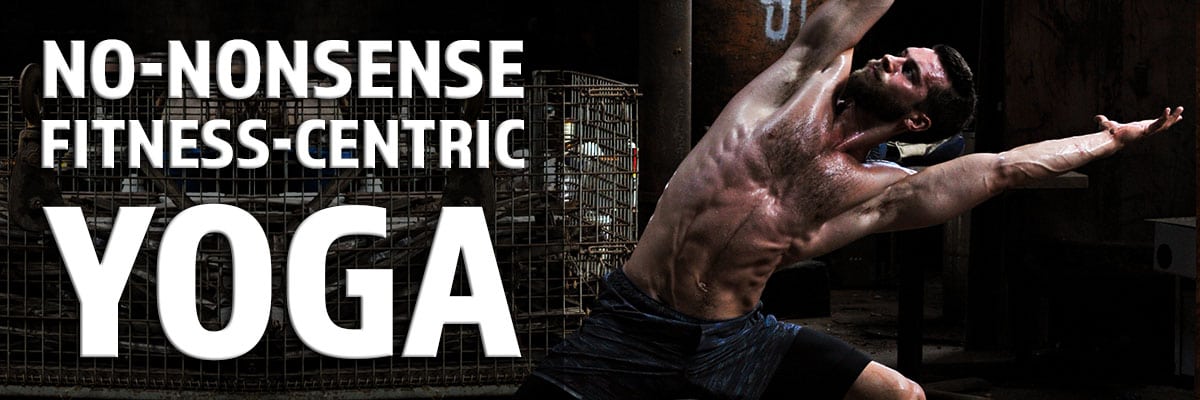 Join Today for Instant Access!
Join Today for Instant Access!
